a&e features
‘Queer Eye’s’ Bobby Berk offers dishy, celeb-heavy Q&A
Careful budgeting, understanding tax implications are key
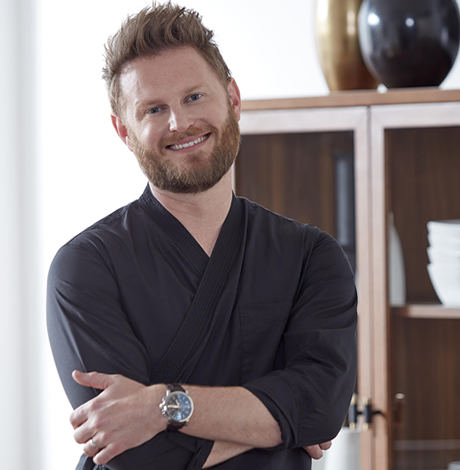
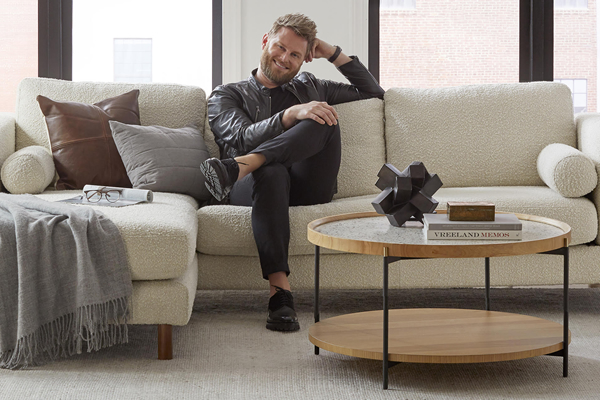
Bobby Berk of ‘Queer Eye’ fame says his new line for ART Furniture has already been warmly received. (Photo courtesy Gardner Group)
Bobby Berk, one of the “Queer Eye” Fab Five, has been making appearances unveiling his new line for A.R.T. Furniture. His designs are available at Ace Furniture (616 N. Western Ave.) in Los Angeles and Furniture Land (4310 San Fernando Rd.) in Glendale. Full details at arthomefurnishings.com.
He spoke to the Blade last week by phone from his home in Los Angeles about his designs, his costars, his gal pal Taylor Swift, his Hollywood adventures and a whole lot more.
BLADE: How’s 2020 been for you so far?
BOBBY BERK: 2020’s been great, very busy. Just wrapped up shooting a podcast a few minutes ago, I’ve got your interview, then I’m running to do a live interview with Channel 9 in Sydney Australia. Been filming some additional shows, been doing a lot of stuff with “Queer Eye,” a lot of great things with my furniture lines, so 2020 already feels like it’s been a full year.
BLADE: Tell us about your new designs.
BERK: So my new furniture line with ART, it’s great because you know people ask me, fans from the show all the time, you know, “I wish you could decorate my house, I with you could pick out furniture for me,” and obviously I can’t with everyone so I wanted to create a line that was accessible to almost anyone. I think it would have been kind of a dick move of me to talk on “Queer Eye” about how changing your home and help change your life and then go out and make a super expensive furniture line that nobody could afford. So I wanted to make sure I partner with a company like ART who is really good at finding that perfect happy medium on price points to where you’re getting good quality furniture but you’re also getting it at a price point that most people can afford.
BLADE: What was the production timeframe roughly?
BERK: I believe we started the process when I was filming season three and four so that would have been late 2018, I think. … We launched it by spring of 2019 … (which) that was for stores to be able to come look at it like Belfort. Then by the time fall hit, it was in a lot of stores. And now this spring … additional stores are getting it that we weren’t able to fulfill in the very beginning first order. We’re dong 10 in about two months, then we’re going to be launching the second collection as well.
BLADE: How has the reaction been so far?
BERK: It’s been a very great reaction. We have had to stage out when retailers like Belfort start to carry it simply because there was such a great response to it, that we couldn’t open up all the stores that were wanting it. When we launched online, back in the fall, a lot of items instantly went out of stock, so it’s been a really great response. You know, it was a line that inspired by things that I would want in my own home so nice, cool, clean aesthetic that can really go with anyone’s decor. When I design, I always try to make sure I think about the ways a piece can not just look good in a home where people like modern, but also a traditional home. My sofas, for example, can bridge the gap between traditional, transitional and modern.
BLADE: To what degree do you curtail or adjust your creative impulses into something you think will sell? Is there conflict in your own head between art and commerce?
BERK: Uh, yeah, ‘cause for me personally, I would go very minimalist and modern, that’s more of my personal aesthetic, so I would always have to kind of find the happy medium between too modern and cold and still keeping it warm where more people will love it.
BLADE: How do you have time to keep all this stuff going with the TV show as well?
BERK: I don’t know (chuckles). I’m never home. I’m sadly gone probably 90 percent of the year the last few years so yeah, I’m just constantly on the road.
BLADE: Is this pace sustainable? What if “Queer Eye” goes another 10 years? Will you rip your hair out?
BERK: Uh, probably (laughs). No, this pace absolutely is not sustainable, I think all five of us feel that way but we also know that you know there’s not always a chance that things will be going this well, so we all need to, not take advantage of it, but utilize the recognition we’ve gotten from “Queer Eye” to do other things. Because of course “Queer Eye” could go on for 10 more years or it may go on for one more year. We never know, so we all want to make sure we’ve found those certain things in our wheelhouse that we’re able to continue to focus on. Before “Queer Eye,” I had a design firm and retail stores so, “Queer Eye” has just opened up more doors for me to be able to do more things with that like my collection at ART. So yeah, is this sustainable how much we travel and work? No, it’s not. But all five of us know that we’re not always going to have the amount of opportunities we have right now, so we need to take advantage of all the opportunities that present themselves and then, you know, in five years — I have a four-five year plan of moving to Santa Barbara and having kids and not working as much.
BLADE: On “Queer Eye,” the other guys spend a lot more face time with the heroes because you’re so busy remodeling. Do you ever feel left out?
BERK: Yeah, yeah, you know. With the other boys, they’re part of the show, they’re literally physically with the hero. You know, Jonathan is cutting their hair, Karamo is having a great conversation and helping them with self help, Antoni is teaching them to cook, Tan is helping them with their clothes — they have to physically be there with them whereas what I’m doing the hero can’t actually see, it’s actually against the rules for them to see it, so I’m often kept away from them simply because they’re not able to see what I’m dong and we want to see a surprise. So we have, I’m sure you’ve noticed in newer seasons, I am with the heroes more, but season one and two, I was barely with them at all. When I would be asked by producers if I wanted to go on a shopping trip wth Tan and help with clothes, I’d be like, “No I’m busy, working, that makes no sense,” but then the show came out and it was like, “Oh, I’m so busy working I’m not on the show.” So, newer seasons, I have a bit more interaction with the heroes than in the past.
BLADE: How did you like Japan and what was challenging about taping there?
BERK: I loved Japan, I’ve spent a lot of time in Japan before, it’s one of my favorite places, especially Tokyo. I love it there just because it’s so organized and clean and it’s such a respectable society. Some of the challenges filming there was space. People would sometimes think it’s easier to design a small space than a large space but it’s actually harder, especially in Japan where in rental spaces, you’re not allowed to hang anything on the walls, you’re not allowed to paint, you’re not allowed to do anything to the floors, so we had to get really creative on building functional loft furniture that we were able to make the space look super different than before without even painting or hanging a piece of art on the walls.
BLADE: There’s obvious camaraderie between you and your co-stars. Were you concerned at first whether your personalities would jell? To what do you attribute that camaraderie?
BERK: You know, the five of us from the start in casting, in final casting, there probably was between 40-50 guys around the various different design, fashion, food — what have you, and at first Karamo, Tan and I we just kind of gravitated to each other and were always hanging out. Then Antoni and Jonathan kind of came into the fold and none of us really thought, “Oh this is the Fab Five,” we just kind of naturally liked each other and I think the casting directors and executives from Netflix and Scout and ITV kind of saw that we had a natural chemistry, that we really naturally enjoyed each other and instead of it kind of being a competition, we were always in there telling each other what was going on and helping each other. So I think our camaraderie definitely helps. It’s not always a natural thing, you put five perfect strangers together who are with each other 24-7, but it’s grown definitely into kind of a sibling relationship. We’re brothers, we’re best friends, there are some moments where we want to wring each others necks, but the great thing about it is, we’ve spent so much time together, we really have developed a feeling of a sibling with each other. We can get mad at each other, but at the end of the day, we’re family, we’re brothers so we get over it and we’re very protective of each other. Sometimes it’s easy, most of the time it’s easy, but sometimes it’s hard. But I think that’s the thing with every relationship.
BLADE: Are you going to Karamo’s wedding?
BERK: Of course.
BLADE: You helping with any of the design?
BERK: Uh, a little bit, but I definitely can’t share what he’s shared with me.
BLADE: What did you think of Jonathan’s decision to come out as HIV-positive? Had he shared that with you previously?
BERK: I was the first one that he told even before we started filming “Queer Eye,” he and I both lived in L.A. at the time and so after casting, we became very close very quickly and he was over at my house all the time and he shared it with me even before we started filming, so I’ve known about it for probably a couple years before he publicly came out about it, so it wasn’t a shock to me. I was happy that he had the strength to do that and that he’s able to help other people by being very public about his status.
BLADE: Have you had many chances to get to know the original “Queer Eye” cast?
BERK: Yeah, I was actually out with them all of them in L.A. two weeks ago. I’ve known Thom Filicia for years, again, before I was on “Queer Eye” as a designer, I really am a designer, so he and I have been in the same industry, we’re always at the same events, we’re always at the same trade shows. And then Carson (Kressley), I’ve known for years. All the others I had met throughout the years, but I’m definitely closest to Thom simply because we’re in the same industry and we’ve known each other so long. But they’re all so amazing, they’re all so lovely, it’s amazing hanging out with them and seeing just how individually unique they all are, just like the five of us are, and how no matter how many years they’ve been apart since the original, when they get together, it’s like they’ve never skipped a beat, it’s cute.
BLADE: So you’d be totally down to do a crossover special of some kind?
BERK: Oh absolutely.
BLADE: Do you like Thom’s design aesthetic? (Filicia, too, has presented at Belfort Furniture.)
BERK: I think it’s beautiful. I think we have a very different design aesthetic. He’s definitely more transitional and traditional, I’m definitely more modern and minimalist, although I would say that both him and I design for the client or for the home. So where my home is very minimal and there’s not a whole lot of stuff in it, for heroes on “Queer Eye,” I can be maximalist for people who want a lot of stuff. So his personal aesthetic is beautiful, he’s done some amazing homes, some amazing condo buildings. But yeah, I love it.
BLADE: Did it bother you that Taylor Swift was, some would argue, rather late to the game in terms of being an LGBT ally?
BERK: You know, of course we always wish somebody would be vocal from day one but I also can very much understand the pressure that she’s been through being basically owned by a record label and being told by a publicist and record labels what you need to say and shouldn’t say, what you shouldn’t get involved in. You know as quote-unquote celebrities, we’re always told, “Oh be as neutral as possible, you don’t wanna offend people on the left or the right, stay out of politics, stay out of issues,” which some of us find much easier than others. You know, I often get myself in trouble because I have a hard time keeping my mouth shut. Jonathan’s the same way and so I can understand why she felt pressured to not be an ally, to not get involved publicly, you know what I mean? … I don’t hold it against her, all I can do is be as very happy that she is using her power to make a difference now and I couldn’t love her more. She’s one of the most sweet, humble, down-to-earth people I’ve met. … You never really know what to expect when you meet somebody like her because a lot of people I’ve met in Hollywood and entertainment come across as one thing and then you meet them in person and they are not at all that thing and it can be very sad and disappointing, so it was a great feeling when I got to meet her and hang out with her and realize that she really is what she portrays out there, she really is this sweet, loving girl who just wants to make the world a better place.
BLADE: Who’s somebody you met who’s markedly different from his or her public persona?
BERK: Hmmm, so yes. So RuPaul, I actually met in 2003, I was a manager at Restoration Hardware in New York and she came in looking for some knobs for some dresser she was doing and he was just the kindest, sweetest most lovely person and then after I had my own stores, he started coming in and shopping in my stores and he would come in and just the sweetest, warmest person. And again, on the show he’s the same way and I’m not saying that he’s not sweet and warm, but one thing I was surprised about when I see him for example at the Emmys, the first time I saw him at the Emmys, he wasn’t very warm, and I was like, “Huh, fame has changed him.” But our publicist at Netflix used to work on “Drag Race,” so he’s very close to Ru, he knows Ru very well, and I mentioned it to him I was like, “Wow, you know, I’ve met Ru multiple times and he’s always like the sweetest, kindest person, I don’t get that from him anymore.” He was like, “No, he just doesn’t like being in the spotlight at events like this so he gets very shy and quiet,” so sometimes you think somebody is some way and they’re not and like. … I thought Ru had gotten cold, ‘cause this industry can do it to you, but then I find out that no, Ru is just as shy and terrified as the rest of us.
BLADE: What was it like filming (Taylor Swift’s) “You Need to Calm Down” video? Surely all those celeb cameos — you were not all there at the same time I imagine?
BERK: All of us were but Tan. He was filming the season finale of “Next in Fashion” that day, so Jonathan and I went from watching the runway show of Tan’s finale directly to Taylor’s set and we met Antoni and Karamo there, so four of us were there together but Tan filmed his separately.
BLADE: Was Ellen or Adam Rippon or any of those people there that day?
BERK: Adam was there, he and I are actually friends. Hannah Hart was there, um — who else was there that day? They’re the only ones I remember being directly around us. The set was so massive and they filmed it over I think a week, so different celebs would come in at different times. Some would film in a studio in front of a green screen, for example Tan’s was shot in a studio, so yeah, we weren’t always there at the same time, that would have been chaos. Oh Todrick Hall was there as well.
BLADE: How is (husband) Dewey? Do you guys get enough time together?
BERK: No, we never get enough time together. He is definitely a very private, very introverted, shy guy. He couldn’t care less about any of the Hollywood stuff, which is actually great. I actually prefer it that way because when I’m at home, I’m back in my normal life. But yeah, no, we can never get enough time together. He’s a surgeon. We’ve been together for 16 years and since “Queer Eye,” he’s just started working less. He’s in private practice, so luckily he’s been able to take a step back a little bit. He usually only works about two days a week then meets me wherever I’m filming.
BLADE: Do you know Nate Berkus? Do you like his stuff?
BERK: I love Nate Berkus. His stuff is great. Both he and Jeremiah. Their taste is impeccable, they’re handsome as hell, they’re the best dads. Yeah, I like them a lot.
BLADE: Do you miss your anonymity?
BERK: Absolutely (laughs).
BLADE: Give me an example.
BERK: I miss just being able to go to the grocery store. Or to Starbucks. You know, I miss being able to just roam around and just do regular things. There’s so many positive things about this and I’m not complaining about the loss of it at all, but, you know, sometimes I wish I could just go to the grocery store and go through all the fruit and shop around but I can’t really do that without getting stopped over and over, so I just pretty much order everything online. Sometimes I’ll go into a Starbucks and a fan will be there and there’ll be a moment of the show that’s really touched them or helped somebody in their family, so they’ll start telling me a story in Starbucks and then be crying, then I’ll be standing there in line holding them and hugging them thinking in my mind, “Oh this is amazing, this is so wonderful, but I really just wanted to get my coffee.” You know, it’s a double-edged sword. Sometimes I wish I could just run in, run out like I used to be able to.
BLADE: Please don’t think I’m asking this because I think you look fat — I truly do not. This is just something I’ve been meaning to ask someone who’s done a lot of TV. Does the camera add 10 pounds?
BERK: The camera adds 10 pounds of gay (laughs). Um, sometimes, yeah. But also when I started filming season five I was 210 pounds and now I’m like 183 so I went from being in very good shape before the show, to putting on a bit of weight during the show because our lives have just been so crazy to now really doubling down and focusing on fitness and not letting myself eat crap on set all the time and not work out.
BLADE: What did you mean 10 pounds of gay? Are gestures magnified?
BERK: Oh yeah, I’m always like, “Damn, do I sound that gay?” Yeah, and I also think it’s because the five of us together, we’re so comfortable together and able to be our true selves that sometimes we really queen out and not give a damn. It’s funny watching yourself.
BLADE: Was it hard to summon the courage to be so open about your past? Leaving home at 15 and all that.
BERK: It was hard because, you know, for quite a few years, I didn’t have a good relationship with my parents …
BLADE: It’s better now?
BERK: Oh yeah, it’s great now. But that’s why it’s a little hard because publicly talking about it, you know, it definitely made my mom sad, it definitely opened up old wounds, it took me a while to be OK talking about it. Sometimes I’m still not OK. Sometimes I’ll get asked about my relationship with my parents in interviews, not in this, but people will really pry and they’ll be like, “Oh well you know, on the show you talked about how horrible they were to you and blah blah blah blah blah, why are you talking to them now?” I’m just like whoah — if I’m able to say I’ve been able to reconcile with my family and we have a good relationship now, why would you try to open those wounds? Why would you try to hurt my mama?
BLADE: Thanks for your time and good luck with your line.
BERK: Thanks!
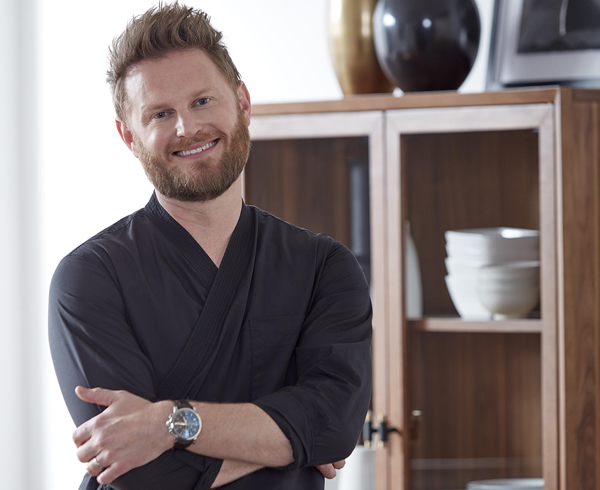
Bobby Berk says loss of anonymity, old family wounds occasionally haunt him. (Photo courtesy Gardner Group)
a&e features
Peppermint thrives in the spotlight
In this exclusive interview, Peppermint talks about her latest work in activism and acting
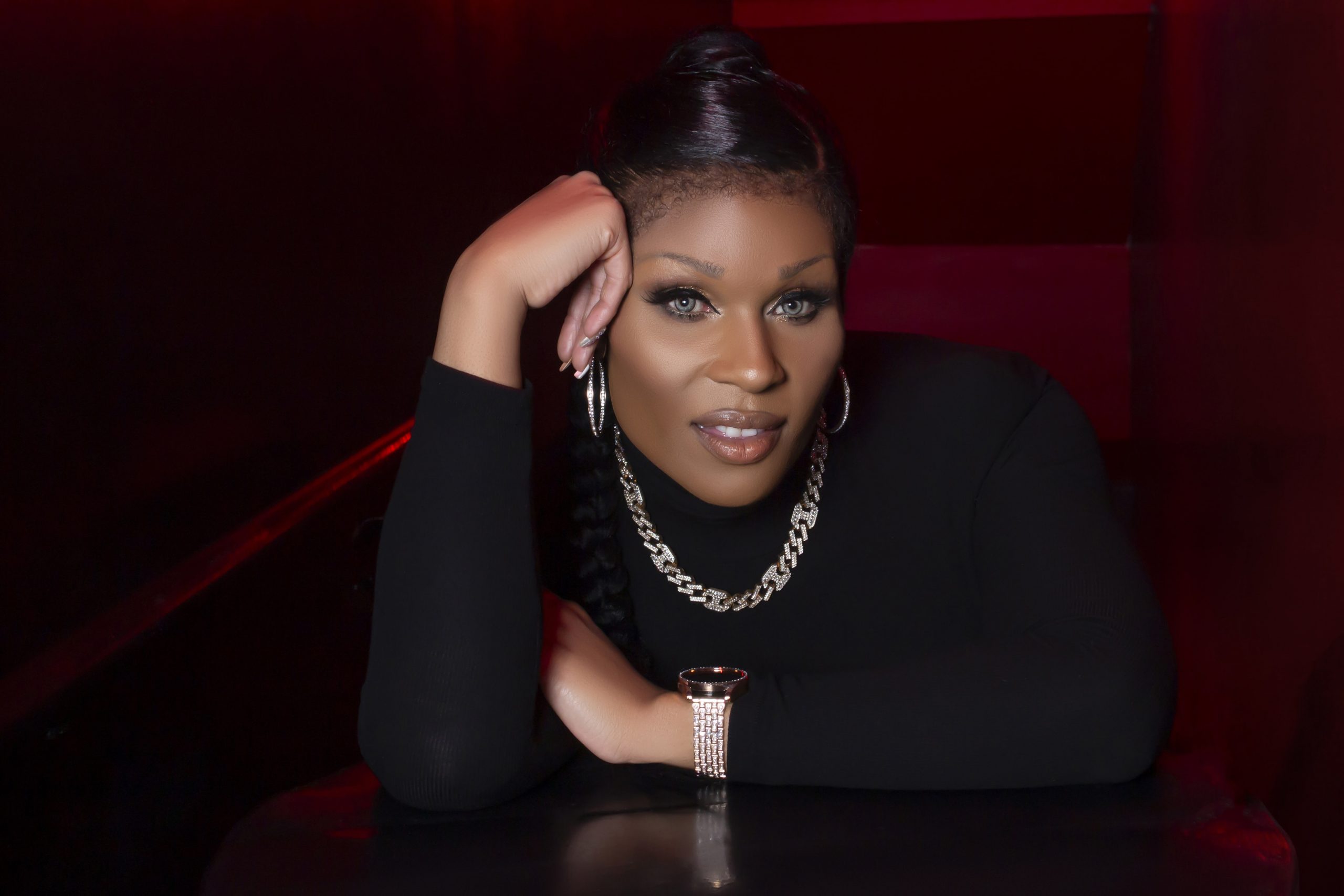
As an entertainer, there’s not much that Peppermint hasn’t done. She’s a singer, actor, songwriter, reality TV personality, drag queen, podcaster and the list goes on. Most importantly, as an activist she has been an invaluable role model for the trans, queer and Black communities.
She’s a trailblazer who boasts an impressive list of ‘firsts.’ She is the first out trans contestant to be cast on “RuPaul’s Drag Race” (Season 9). She is the first trans woman to originate a principal musical role for Broadway’s “Head Over Heels.” She was also the first trans woman to compete in the runaway hit series “Traitors,” on Peacock, and she is the ACLU’s first-ever Artist Ambassador for Trans Justice. Her accolades are a true testament of the courage it took for Peppermint to live her authentic self.
We caught up with Peppermint to chat about her activism, taking on bigger roles on screen, our current political and social climate and life beyond the lens. For Peppermint, coming out as trans was not just a moment of strength—it was a necessity.
“It unfolded exactly as I had imagined it in terms of just feeling good and secure about who I am. I was in so much pain and sort of misery and anguish because I wasn’t able to live as free as I wanted to and that I knew that other people do when they just wake up. They get dressed, they walk out the door and they live their lives. Being able to live as your authentic self without fear of being persecuted by other people or by the government is essential to being healthy,” Peppermint tells the Los Angeles Blade in an exclusive interview.
“I was not able to imagine any other life. I remember saying to myself, ‘If I can’t imagine a life where I’m out and free and feeling secure and confident and left alone, then I don’t even want to imagine any kind of a life in the future,'” says Peppermint.
Recently, Peppermint returned for season 2 of Netflix’s comedy “Survival of the Thickest.” She added some spice and kick to the first season in her role as a drag bar owner. This time around, her character moves center stage, as her engagement and wedding become a major plot line in the show. Her expanded role and high-profile trans representation come at just the right time.
“It’s the largest acting role I’ve ever had in a television show (which my acting degree thanks me). It feels right on time, in a day where they’re rolling back trans rights and wanting to reduce DEI and make sure that we are limited from encouraging companies, corporations, industries, and institutions from not only featuring us, but supporting us, or even talking about us, or even referencing us.
“It feels great to have something that we can offer up as resistance. You can try to moralize, but it’s tougher to legislate art. So it feels like this is right on time and I’m just really grateful that they gave me a chance and that they gave my character a chance to tell a greater story.
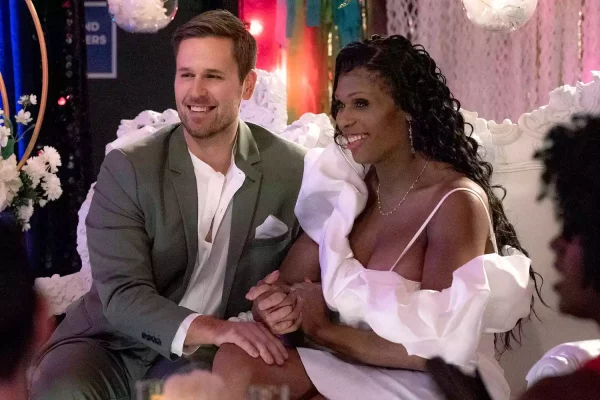
Dan Amboyer and Peppermint on ‘Survival of the Thickest’ Season 2.
(Photo credit Vanessa Clifton/Netflix)
Peppermint’s expanded role also accompanies a boom in queer representation in Black-powered media. Networks like BET and Starz and producers like Tyler Perry, are now regularly showcasing queer Black folks in main story lines. What does Peppermint think is fueling this increased inclusion?
“Queer folks are not new and queer Black folks are not new and Black folks know that. Every Black person knows at least one person who is queer. We are everywhere. We have not always been at the forefront in a lot of storytelling, that’s true, and that’s the part that’s new. It’s Hollywood taking us from the place where they usually have held us Black, queer folks in the makeup room, or as the prostitute, as an extra—not that there’s anything wrong with sex work or playing a background performer. I’ve played the best of the hookers! But those [roles] are very limiting.
“Hollywood has not historically done and still does not do a very good job of, including the voices of the stories that they make money [on]. And I think they’re realizing [the need] to be inclusive of our stories and our experiences, because for a long time it was just our stories without our actual experiences. It’s also exciting. It’s dramatic. It makes money. And they’re seeing that. So I think they’re just dipping their toes in. I think that they’re going to realize that balance means having us there in the room.”
Peppermint’s activism is tireless. She has raised over six figures for prominent LGBTQ rights groups, she continues to speak around the nation, appears regularly on major media outlets addressing trans and LGBTQ issues and has been honored by GLAAD, World of Wonder, OUT Magazine, Variety, Condé Nast and more—all while appearing on screen and onstage in a long list of credits.
Now, under the Trump Administration, she doesn’t have time to take a breath.
“I wouldn’t be able to do it if it weren’t second nature for me. Of course, there are ups and downs with being involved with any social issue or conversation and politics. But I am, for now, energized by it. It’s not like I’m energized by like, ‘Ooh, I just love this subject!’ right? It’s like, ‘Oh, we’re still being discriminated against, we gotta go and fight.’
“That’s just what it is. I get energy because I feel like we are quite literally fighting for our lives. I know that is hyperbole in some regards, but they are limiting access to things like housing, healthcare, job security and not having identification. Passport regulations are being put in a blender.”
Peppermint also mentions her thoughts on the unfair mandates to remove trans military members and revoke the rights and resources from the veterans who worked their whole lives to fight for this country.
“When you strip all these things away, it makes it really difficult for people to have a life and I know that that is what they’re doing. When I look around and see that that is what is at stake, I certainly feel like I’m fighting for my life. And that’s energizing.
“The only thing that would be the most rewarding besides waking up in a utopia and suddenly we’re all equal and we’re not discriminating against each other—which probably is not happening this year—is to be able to be involved in a project like this, where we can create that world. It’s also being built by people who are a part of that story in real life and care about it in real life.”
Peppermint is clear on her point that now is the time for all of the letters of the LGBTQ community to come together. Everyone who is trans and queer should be joining the fight against the issues that affect us all.
“Just trust us and understand that our experiences are tied together. That is how and why we are discriminated against in the way[s] that we are. The people who discriminate—just like how they can’t really distinguish between somebody who’s Dominican and somebody who’s African-American—you’re Black when you’re getting pulled over. We are discriminated against in much the same way. It’s the same with being trans or queer or gender non-conforming or bi, we all have our own experiences and they should be honored.
“When laws are being created to harm us, we need to band together, because none of y’all asses is gonna be able to stop them from getting rid of marriage equality—which is next. If you roll the tape back to three years ago when somebody was trying to ask me about drag queen bans on readings in school, I was saying they’re coming for trans rights, which comes for bodily autonomy and abortion rights, which comes for gay marriage rights. Those three things will be wiped out.
Peppermint doesn’t take a pause to get fired up and call gay folk out in their obligation to return the favor to the Black trans community.
She shares with us her final thoughts.
“You cis-gender homosexuals need to stand the f–k up and understand that we are standing in front of you. It’s very difficult to understand this and know this, but so many of the rights that we have were hard fought and won by protest and by people fighting very hard for them. And many of those people in every single instance from the suffrage movement, obviously Civil Rights, queer rights, the AIDS and HIV movement—Black queer people have been there the entire time. Trans people have always been a part of that story, including Stonewall. Yes, we are using different terminology. Yes, we have different lenses to view things through, but let me tell you, if you allow us to be sacrificed before you see us go off the side, you will realize that your foot is shackled to our left foot. So, you better stand the f–k up!”
Peppermint for President!
a&e features
Musical Mondays, a mainstay in WeHo nightlife, celebrates 16 years
MuMo will be honored by the City of West Hollywood for its dedication toward the arts
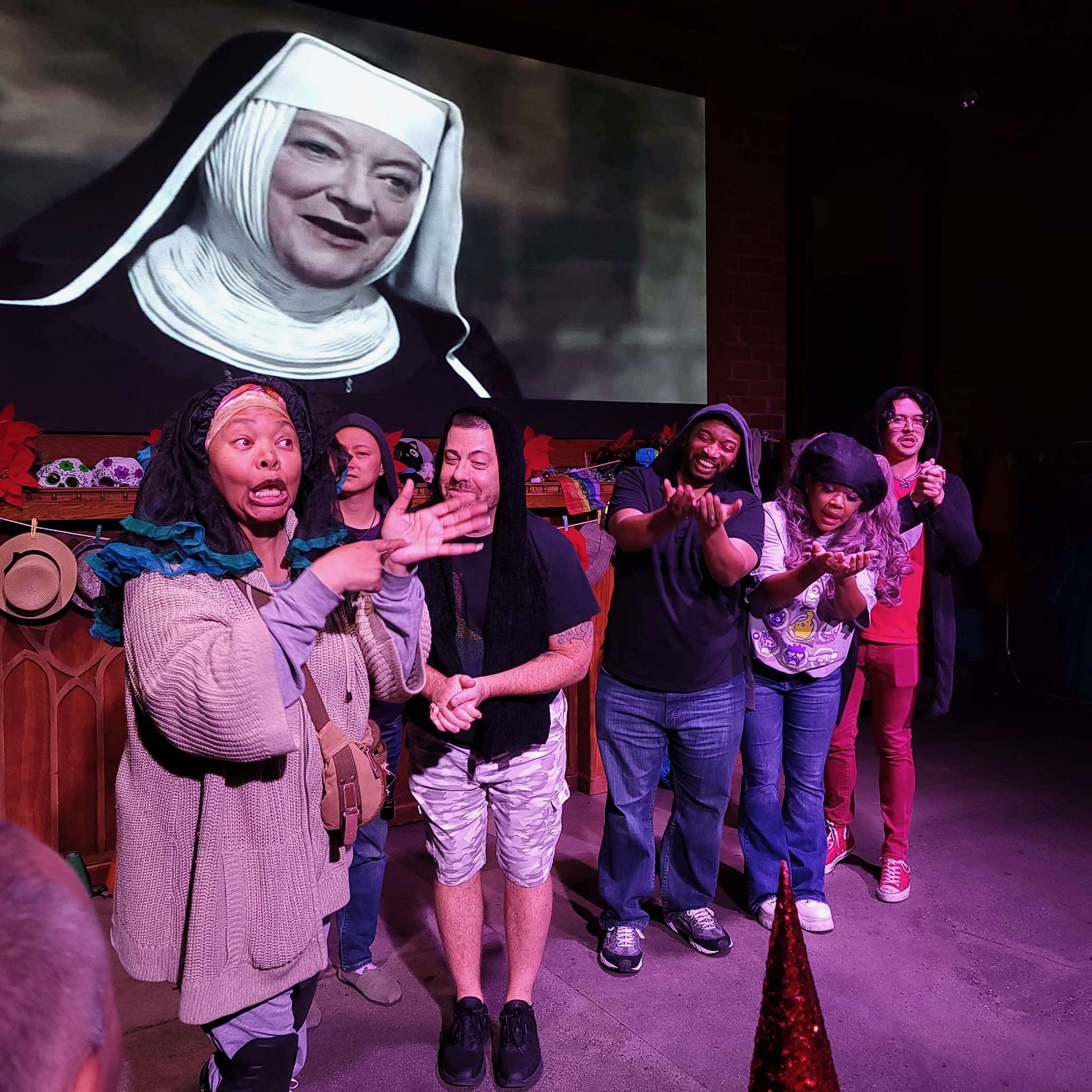
MuMo will be presented with a Proclamation from the City of West Hollywood for Service to the Community.
Nearly every Monday night for 16 years, throngs of musical theatre lovers, from the LGBTQ community and beyond, have gathered together to celebrate the arts and community. MuMo has become the ideal safe and creative space with a diverse crowd that reflects the Los Angeles community. Everyone is welcome as MuMo go-ers sing along to video clips from Broadway, movies and more, while some of the crowd get up and shadow cast what’s happening on the screen.
The evening, now residing at The Chapel at The Abbey, culminates in “The Live Spot,” featuring some of the best live performances L.A has to offer. Headliners change every week, ranging from cast members from Broadway national touring shows, to local theatre members, to names from the cabaret world. This is where theatre professionals come to play.
The energy and love in the air are electric and for many, this is the one night during the week that everyone can escape and shut out the trials of the outside world and immerse themselves in love, laughs, and musical magic. MuMo fans are fierce and loyal. As part of the “Your Name Under the Stars” initiative at The Hollywood Bowl, the crowd raised funds to have brass plaques put on three seats in section Q1. These plaques read “Musical Mondays Los Angeles”, “The Fans of MuMo,” and “And one for Mahler!”
Some of Broadway’s best–including a few Tony Award winners–have joined MuMo in the audience and on stage. Broadway legends like Neil Patrick Harris, Lin-Manuel Miranda, Billy Porter, Laura Benanti, Sutton Foster, Alex Newell, Valerie Pettiford, Obba Babatunde, Lillias White, Corbin Bleu, Matt Lucas, Megan Hilty, Jai Rodriguez, Terri White, Davis Gaines, Gedde Watanabe, Michael Feinstein, Bruce Vilanch and Blake Hammond have stopped by to enjoy the show.
On April 21st, MUMO will be presented with a Proclamation from the City of West Hollywood for Service to the Community, organized through the offices of Assemblymember Rick Chavez Zbur (AD-51) and WeHo City Council Member Danny Hang.
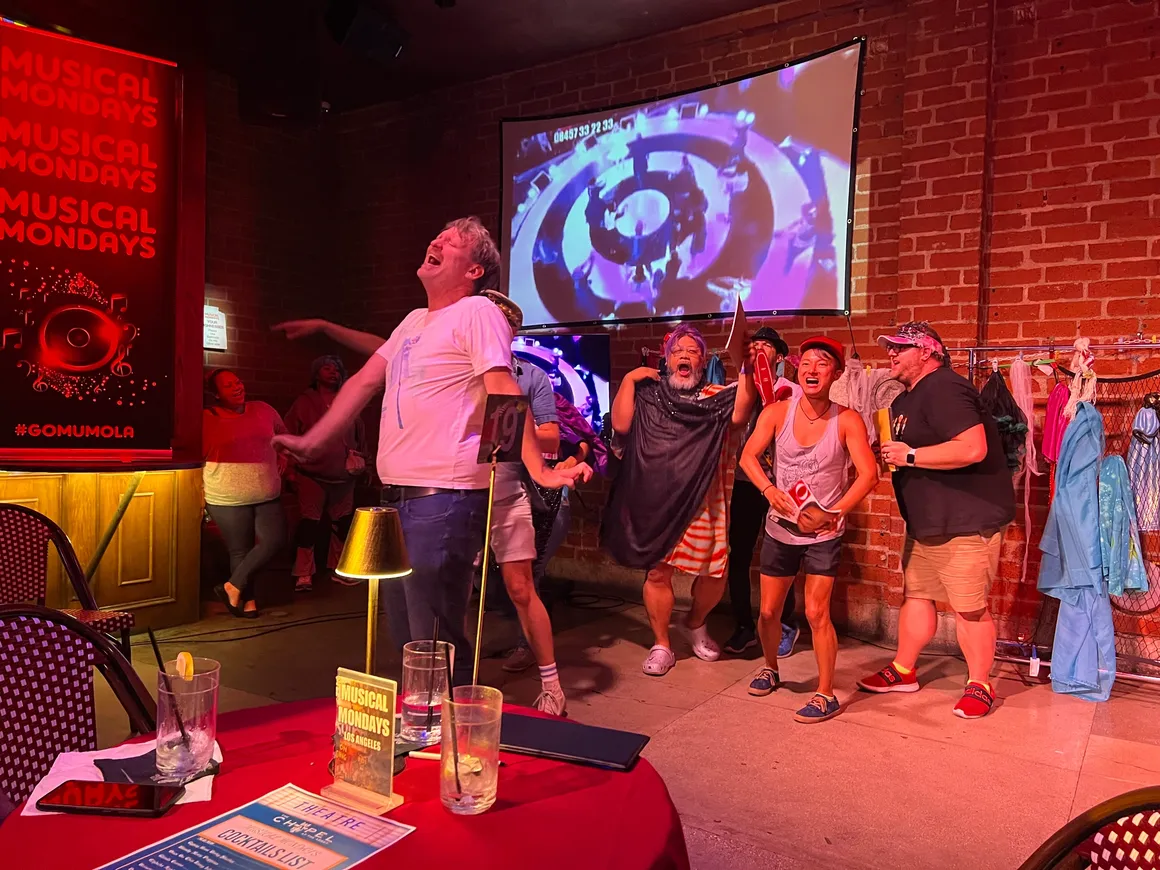
Photo credit MUMO
The masterminds behind MuMo are Ishka Maher, a long-time and fierce ally of the queer community and the evening’s emcee, Darin Sanone, a veteran in showbiz. The two of them make a veritable team as they continue their mission to provide a safe space for all to come and celebrate the arts. We caught up with them in anticipation of their big anniversary celebration.
Ishka Maher:
What was your inspiration for starting Musical Mondays?
We started Musical Mondays because there was simply a need for a theatrical musical event in WeHo. No one else was doing it or realized there was such an interest. What it’s grown into is very organic.
Musical Mondays has such a die-hard fan base that has been long-lasting. What makes the event so popular?
Our fan base has grown with the night. They grew with us. They are a part of who we’ve become.
What is it about musicals that brings everyone together?
Musicals are emotional magic. Unlike stories told on the screen, an audience watching a musical is encouraged to react and be a part of the action. It is emotional crowdsourcing.
What has been one of your favorite memories from Musical Mondays?
Every single week, there is a moment of joy when I get to witness a performer realize they’ve rocked it. Or the fans of MuMo have the audience howling with laughter. Or the bravery of a first-time singer. Or a group of friends meeting up in their favorite corner every week. These things bring me joy. Big events like our “Wicked” show nights, I’ll always remember.
What do you want audiences from Musical Mondays to walk away with the most?
When our audience walks away I want them to have felt like they’ve been a part of something special and unique. And to feel seen and welcomed into our goofy MuMo family.
What can we expect from Musical Mondays in the future?
I’m working constantly for our unique event to stay strong and be a part of the community. I know we have a strong fan base but I love it when celebrities and casts from touring shows hang out with us. I hope for more of that.
What do you love most about working in queer nightlife?
I’ve been working in the gay community of WeHo for 35 years. I feel blessed. It’s always dynamic, and you never know what to expect.
What is your message to Musical Mondays fans?
I want MuMo Fans to know that the night is strong in this space. We have the support of the Abbey and their amazing staff, and we plan to build on what we’ve been doing so successfully. It’s my favorite night of the week!
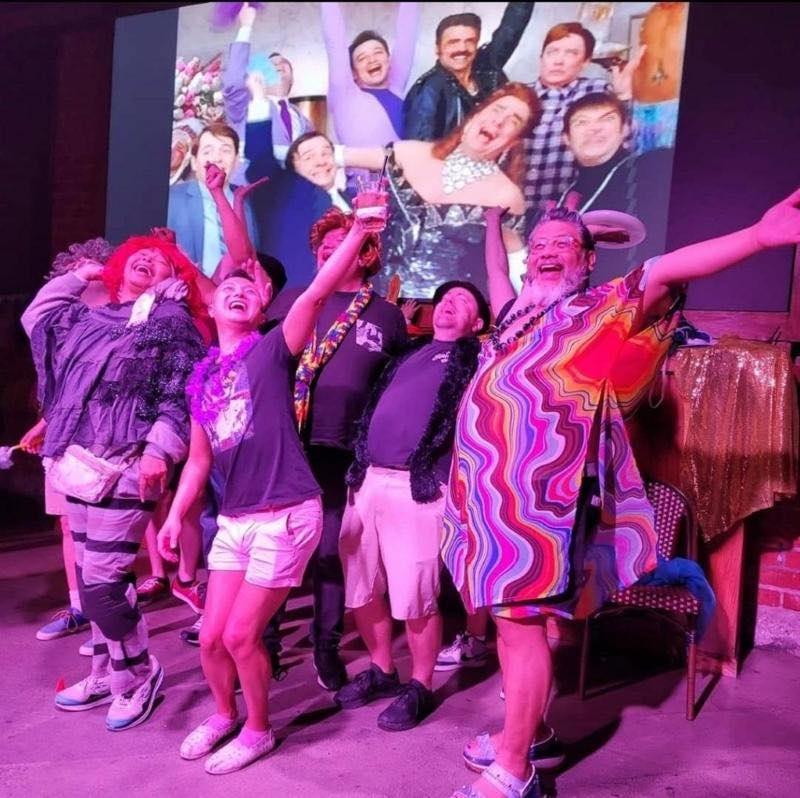
Photo credit MUMO
Darin Sanone:
You have been on stage and behind the scenes in Weho for quite a while. How has nightlife changed the most?
I have been on stage and behind the scenes in Weho for 26 years. Nightlife has changed tremendously. When I started in Weho in 1999 the vibe was definitely the circuit vibe. The Music was fast and hard and the party scene was fast and hard. Drugs were the norm and widely used. The bars were packed and people went out to meet potential dates or relationship candidates. Now people go out to dance or drink and leave dating and relationship searches to Apps on their phones. The music has changed, and so has the culture. Hip-hop is the preferred music of the people in clubs, and weed is the preferred substance to escape. People still drink alcohol, but they usually pregame at home or in their cars, and weed is much more popular than designer drugs or alcohol. Bar owners have to really work hard to get people into the clubs and then to get them to buy drinks. Without promoters and promotions, clubs cannot survive. Since Covid-19 almost every bar [and] nightclub in WeHo has changed ownership at least once. Some have changed owners twice and are well on their way to a third owner.
You are the emcee extraordinaire for Musical Mondays. What do you love most about doing this event week after week?
It is the highlight of my week!
The thing I love most about doing the Musical Mondays every week is the people! We get the best singers in L.A every week at Musical Mondays, both in the Live Spot Singer Showcase and after for Broadway Karaoke. It is the most accepting and supportive crowd in all of WeHo. Many people can feel intimidated by the West Hollywood crowd and scene. At Musical Mondays, everyone is welcomed and embraced. No one is made to feel less than. Almost every week, I am brought to tears by the singers who grace our stage. I have been a musical theater lover my entire life and have been performing musical productions since I was a very young child. The musical is the greatest contribution to the giant umbrella of music America has made. I love Musical Mondays and am grateful to be a part of the musical magic that happens at the Chapel every Monday night!
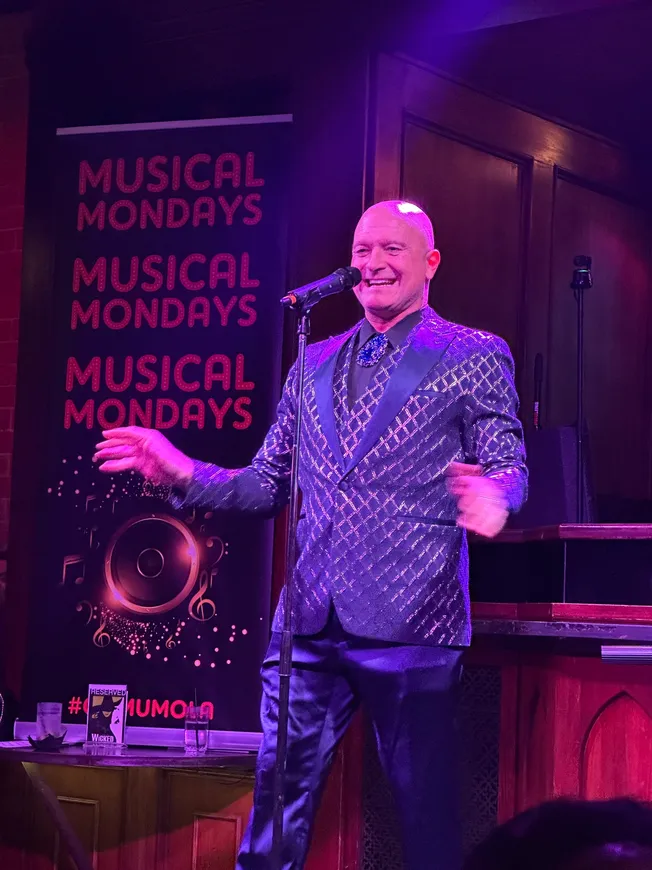
Photo credit Darin Sanone at MUMO
In your opinion, what makes Musical Mondays so popular in the community?
I believe what makes Musical Mondays so popular in Weho is a quadruple combination! This is our secret recipe! First, we have an amazing sound team. Keith Jacobson spins the best in Broadway and movie musical clips, and Greg Watkins is the best sound engineer in all of Weho! Greg makes every singer and musician sound phenomenal. I have had the pleasure of working with Greg on shows I have produced and hosted for 23 years. There is no one better in L.A! Our Second secret ingredient is the Fans of MuMo! The Fans of MuMo evolved organically back when Musical Mondays was at Club 11. The Fans, or as we sometimes call them, the “MuMo’s,” perform lip sync comedy routines to almost every video Keith plays. They are the most unique and talented crew of actors you will find in California, and they show up every week and pour their heart and soul into every Monday night. The third secret element to our success is the Live Spot, which is where I join the show. The Live Spot is a singer showcase with professional singers from L.A and the world. We have all of the best local musical productions showcasing their shows and many of the Broadway National Tours that pass through L.A! The caliber of singers [and] actors in our Live Spot is paralleled only by Broadway in New York City. The final ingredient to Musical Mondays’ success is the Broadway Karaoke segment. You never know who might show up for our Karaoke portion! We get professional Broadway and film actors, karaoke die-hards, influencers, drag superstars, beginning singers and a rainbow of beautiful souls! It is the most supportive community you will ever find at a karaoke event. Everyone shines!
Why is celebrating musicals so important right now?
Celebrating musicals is so important right now for many reasons. Most importantly is the fact that the LGBTQ community is under assault in America right now.
Secondly, musical theater embraces and celebrates diversity. It is 100% supportive of the LGBTQ community and of all races in our globe. As America moves back toward racism and homophobia, Broadway marches forward, spotlighting racial diversity and sexual identity inclusion. Music and the musical unite people in love through song and dance.
As a performer, how do you feel with politics getting so involved with the arts right now? How do we fight back?
Politics has always been so involved in the arts. The best music is political. The best theatre is political. Politics is what fuels much of the arts. The Beatles, U2, Marvin Gaye, Bob Marley, Bob Dylan, Nina Simone, Pink Floyd, Willie Nelson, Johnny Cash, Crosby Stills Nash and Young, Bruce Springsteen, Joan Baez, The Sex Pistols, Green Day, The Police, Madonna, and Lady Gaga are all famous because they were and are political.
ART IS POLITICAL! MUSIC IS POLITICAL IF IT’S GOOD! THEATER IS POLITICAL IF IT’S GOOD!
We fight back by voting, protesting, boycotting and most importantly by loving.
What do you love most about working in LA queer nightlife?
What I love most about working in WeHo nightlife is the beautiful colors of the rainbow. WeHo is for everyone, not just the LGBTQ community. West Hollywood has become much more like Europe in the last 25 years. The LGBTQ community now parties with the straight community. Nobody in the younger generations cares a bit what someone does in the bedroom. The youth of America don’t segregate themselves. The only way the LGBTQ community will survive in America during this dangerous time is if our straight friends stand up for us. We must allow our WeHo spaces to be safe for all of the rainbow. If WeHo doesn’t embrace everyone, especially our straight allies, the LGBTQ community will be in concentration camps wearing pink stars or worse. The greatest power is love. WeHo nightlife is ever evolving and as Darwin teaches us, survival happens for the most adaptable.
Adapt or perish!
Embrace all of the people. Musical Mondays is for everyone Gay, Straight. Bisexual, Trans, Black, White, Brown, and Pink! We are the Pink Pony Club–never forget that.
What is your message to Musical Mondays fans?
Thank you for supporting me, live performance and the greatest contribution of America to the genre of music–the Broadway Musical.
God bless WeHo! God Bless America! God bless Musical Mondays!
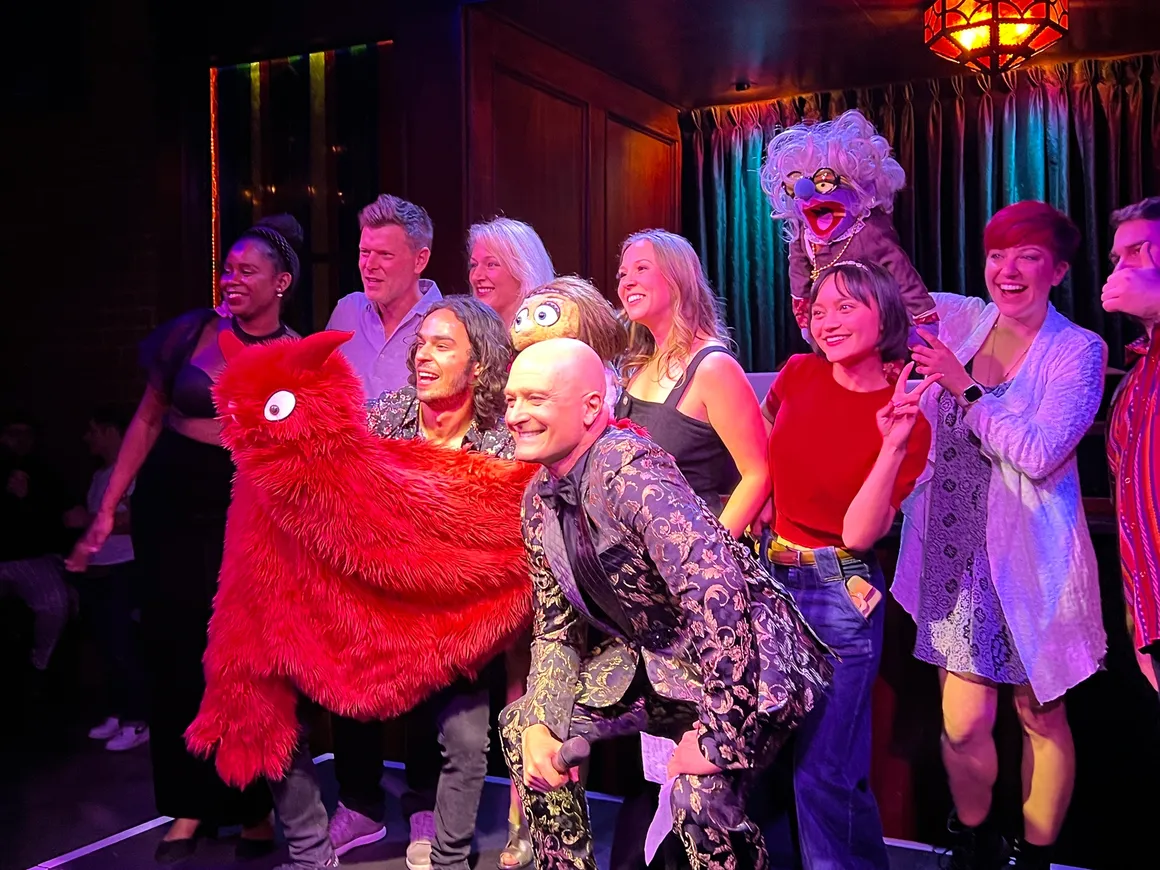
Photo courtesy of MUMO
For more information on MUMO, head to MuMoWeHo.com
a&e features
No longer just a go-go dancer, Prince Joshua debuts ‘Crowned’ EP
This WeHo go-go dancer and socialite shares his life beyond the dancing box
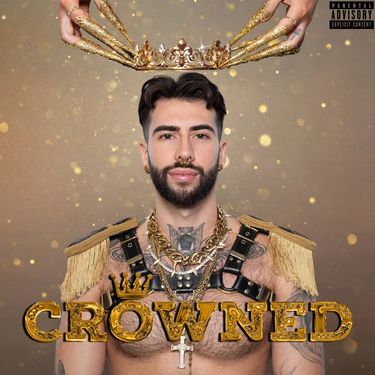
In this new “Meet Your Locals” column, we highlight the journey of a talented local dancer and emerging musical artist as part of Los Angeles Blade’s mission to get to know our community, we continue to do a deep dive into the personalities who make up the queer culture of Los Angeles.
Across queer bars along the West Coast, audiences and nightlife enthusiasts have come to appreciate Prince Joshua’s electrifying dance performances during his go-go sets. While renowned for his impressive dance skills, Prince took a career pivot last year by reintroducing himself as a musical artist with the release of “Coochie” by Baddie Gang.
In January of this year, Prince released his debut EP, “Crowned.” The project offers a deep dive into his personal experiences within nightlife culture, touching on themes such as navigating catcalling, dating, celebrating life and more.
We sat with Prince Joshua to get the exclusive insight on his new music.
Tell us your story of moving to LA:
I had always dreamed of moving to Hollywood and being on stages entertaining people. It’s amazing to fast-forward to living that exact lifestyle with dancing at bars like the world famous Abbey [bar] every weekend and entertaining my community as my job. Growing up in a small conservative town I never felt like the world was made for someone like me, the world I grew up in was made for heterosexual people who live ordinary lives. As I grew into the eccentric and charismatic homosexual that I am, I realized I needed to live somewhere where the things I was bullied for, would be celebrated. West Hollywood was made for people like me, people who dress up to express themselves, who aren’t afraid to be unapologetically themselves, and most importantly genuinely be who they are.
What do you love most about life in LA?
I love being surrounded by people with as much ambition and dreams as I have. There’s so much room in the sky for every star to shine and it makes me so excited when I hear that my friends are working on something new to achieve their goals and dreams. We’re all out here putting in hard work to make our art stand out and be seen, being around so much creativity and creatives helps push myself to chase my own dreams and hustle to achieve them.
Many people know you for your dancing, What got you into making music?
I’ve always had a love for poetry and have written songs and poems before, but my friend Tokeyo really pushed me into making music when he asked me to feature a verse on his song “Coochie.” I have such strong love for hip-hop and rap that once I learned the process of making my own verse, I wanted to continue making more. I began finding beats and writing songs which lead me to release my first EP with six songs and three music videos.
Who is your favorite artist?
None other than the queen of rap herself – Nicki Minaj. From her undisputed discography of hits, iconic visuals and unique delivery, she has inspired all of today’s current rappers from her use of voice animation, flow switching, metaphors and punch lines all in a perfectly constructed way.
Who is your favorite queer artist?
Kim Petras has been one of my favorite pop girls since 2018. When I heard heart to break I instantly loved the artist. “Turn Off The Light” projects volumes one and two are some of my favorite works of hers. Spooky horror inspired pop music & she’s queer – it can’t get any better than that!
What do you hope to accomplish with your music?
I hope to give anyone who listens to my music the confidence to unapologetically be themselves and bust a move. I want people to dance, be themselves and not be ashamed by doing so. I used to get insecure when others would hear what music I listened to or saw me dancing or singing along, but I’ve learned something that has really reshaped my thoughts on that; no one’s opinion matters but your own, if it brings you joy and doesn’t harm anyone in the process, then go for it!
What do you love most about performing in the queer LA nightlife?
I just love the energy and fashion from my community. Seeing the incredible outfits of each individual expressing themselves their way with their own aesthetic is such a beautiful sight. When people see how hard you hustle and how much work you put into your art it’s an amazing feeling to see a crowd sing along, dance, or even stand shocked at what I’m doing on the stage. Just like Lady Gaga’s iconic, “I Live For The Applause.”
What are some misconceptions people have performers in LA?
A lot of people mistake dancers for porn stars and while they both have some similarities, not every dancer is a porn star and vice versa. Coming from a cheer background I put so many elements into my dancing and rap performances, such as kicks, splits, toe touches, etc. It’s so much more work than just having a nice body. While I respect and appreciate what porn actors do, I wish people wouldn’t put go-go dancers and porn actors in the same categories as they usually do. We entertain in very different ways, both taking a lot of hard work, but still very different worlds.
What are your favorite places to perform and why?
I love performing for music festivals. OutLoud’s WeHo Pride is one of my favorite events where I’ve not only had the opportunity to go-go dance but also perform my own music on stage. Seeing so many people in the crowd, being part of a sickening line up and getting to go all out in my ‘Princely’ way brings me a feeling of accomplishment and adrenaline like none other.
SUMMERTRAMP is another queer festival I’ve had the chance to perform at which I’m so grateful for. Every time I get to share my music to my community if I inspire just one person in the crowd to smile, dance, or embrace their inner selves then I know I’ve done my job.
How does being queer inform your music?
As I’ve stated before, this world was made for heterosexual, ordinary people. My music is made to take you out of that pouring world and into my eccentric queer and royal fantasy. Not many queer people can relate to the regular top 40 songs because they are all from a heterosexual lens. With my music, I hope that people can relate to my experiences or at least my experience as a queer person and be able to embrace their sexuality by giving them music that is made for them.
How do you balance your personal life with your professional life?
When you are chasing a dream while hustling as an entertainer your entire life is consumed with said dream. In my free time I am often stretching, working out, writing new music, or planning my next music video or photo shoot. My passion is my job so I never feel like my personal life is suffering when I’m consumed with working on what I love to do, but making sure I give myself time to rest and recharge is a vital key to ensuring I don’t burn out. I try to always give myself one day a week where I don’t focus on work or projects and allow myself to rest and recharge.
Any advice to people who want to start making music or dancing?
Just go for it! You’re always gonna be your own worst critic, but at the end of the day, you will see so much growth when you just allow yourself to put out the art that you’ve created and continue making new art. Find a support group that can help you level up whatever it is. You’re passionate about and continue pushing yourself to be better than you were the day before.
What’s next for your music career?
Right now im working on my next EP and I’m so thrilled because I know it’s better than my first. Being able to see my own growth inspires me so much to keep creating. You can also expect some collaborations with other up and coming queer artists!
What message do you have for the queer community?
Every day you wake up, you have the chance to genuinely be yourself and encourage others to do the same. While there’s so much in this world working against us, there are so many of us in the community to lean on and look for support when you feel alone. Be unapologetically yourself, stand strong with your friends and family within the community and take up as much space as you can by using your voice, sharing your art and being yourself.
To keep up with Prince, follow him on Instagram.
Rose Montoya is a renowned, award-winning, Trans, Latina, writer, advocate, educator, model, actor and viral content creator.
a&e features
Fashion icon Isaac Mizrahi brings performances to the West Coast
The legendary fashion designer and entertainment icon Isaac Mizrahi to perform in California
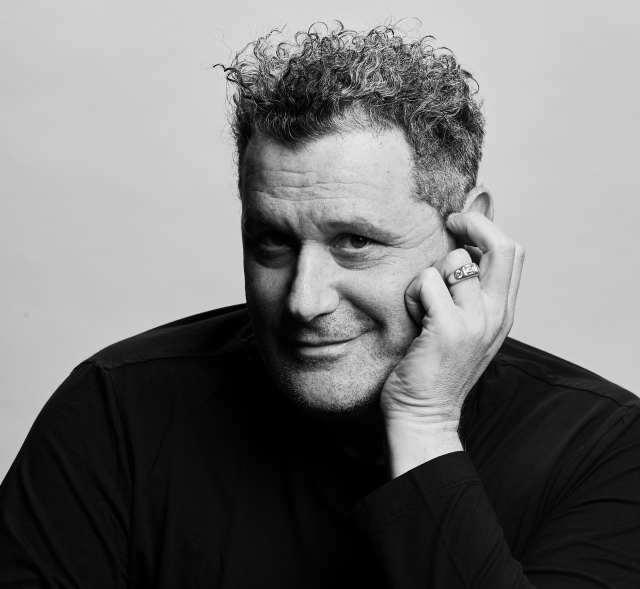
Isaac Mizrahi’s talents are many, equally at home in the worlds of fashion, entertainment and theatre. As a designer, he redefined elegance and innovation, making his mark with iconic collections and runway shows. But Mizrahi’s artistry doesn’t stop there. He’s captivated audiences as a Broadway star, a beloved television personality and a multifaceted performer with a gift for storytelling and humor. His unique ability to seamlessly blend wit, charm and deep creative expression, has earned him fans across every medium he touches.
Now he’s taking his talents back to the stage with an exciting new cabaret tour.
Ahead of his anticipated tour, we sat with Mizrahi to talk about his artistic process, stepping back into the spotlight and what to expect from his upcoming performances.
Can you give us a taste of your conception process? Share with us some of the inspiration for your upcoming show.
Though I think my act plays as well on a larger stage as it does in a cabaret, I think about the show I do as something that changes a lot the way a cabaret show does. My process starts with collecting ideas and writing monologues which I internalize, and which are always evolving. The music rehearsals are really important, in terms of coming up with arrangements that sound fresh. Also there’s a chemistry I have with the musicians that motivates me to express myself, to entertain them, make them laugh.
When did you first get the itch to step into the spotlight and how did it feel to step onto the stage for the first time?
You might know I was a trained performer before I was a clothing designer. I went to Performing Arts High School in NYC and I had every intention of continuing my ambition in show business but I got scared because I was a fat kid, not attractive, in a class full of gorgeous people whom I thought were much more cast-able than me. So I did the grown-up thing and subverted into the clothing business which was not a terrible idea. I’m pretty good at that too. But now I’m focusing my efforts in show business and when I step on stage and do well, the rewards are huge. It’s a dream come true, to use a very cliche phrase that in this case really nails the feeling.
Million Dollar Question: what are the most undeniable differences between performing for East and West Coast audiences?
Especially now in this crazy world we are living in, I feel very little difference between the West and East coast. I did a few shows last month in Florida and Arizona where I was treading lightly. When I started those shows I was a little scared they might not react in the way I expected but it was incredible because they were with me the entire time. But I will say those shows I did have to temper slightly. This kind of entertainment is inherently political. The minute a performer takes the stage they show who they are, it’s political whether it’s cabaret or concert. An audience knows who they are looking at. In the West [or] East coast of it right now, I’m really looking forward to being in California, a state that I feel very at home in.
You’re no stranger to reality television. Here’s a two-parter, brace yourself: Can you share one story with us about a reality tv appearance of yours that will make our readers gasp? Between RuPauls Drag Race, Project Runway and The Apprentice, which host called on the most foundation?
I will say in retrospect, having been on The Apprentice makes me gasp! And it wasn’t once I was on that show as a judge – twice. And though there’s no need to apologize, it does bear saying that even when I got the booking, I was furious at my manager for accepting it! Even before he was president, he was distasteful. But who knew?
What are some of your thoughts on today’s politics and their impact on the arts and the lives of the artists creating it?
I’m feeling devastated and exhausted not just about the policies on the arts but on every policy. And not just the obvious ones. The crazy trade wars that are being waged. This is only going to mean that everything is going to get even harder. And not just that t-shits and jeans are going to get more expensive. Tickets will be harder to sell. Food will be triple the price. What a disaster.
Fashion design, cabaret performer, actor, seems like you know how to keep yourself busy from one project to the next. That said, there’s no denying the importance of self care. What are some things you do to disconnect and reset on your downtime (assuming that you have downtime)?
I have a small place in Bridgehampton where I stay when I’m not working. I have two dogs and a husband. I love being there together with them. I love cooking. I love reading. And when I’m in the city I love going to the theatre and museums. I guess this sounds really boring.
With all that you do, I’m sure there have been some unexpected hiccups over the years. Can you share with us an experience of a time when things did not go to plan?
I feel like life is one long hiccup. When it seems obvious to the world that I’m experiencing a hiccup, as in 1998 when I closed my couture business or 2013 when I closed it for the second time, those times were weirdly freeing. Right now I feel very threatened by the current economy, by the instability of all industries and in the chaos being sown around the world. Right now, I would say, is a huge hiccup time.
Would you rather: grab brunch with Stephen Sondheim or have a spa day with Heidi Klum?
Sondheim and I were great friends. I wish he were alive to have lunch, though he wasn’t much for lunch, I suspect we would have dinner and then go see a show or play bridge… we played bridge together. I like Heidi too!
In one elaborately phrased sentence, can you tell us what to expect when we come to see your upcoming cabaret show?
In one sentence – when you come see my show you will be surprised and hopefully you will laugh and hear stories and music you did not expect to hear.
For tour information and tickets, head to his website.
a&e features
Meet the chef who built his legacy in the LGBTQ+ community
He is an icon in the Hollywood culinary scene and a fierce ally in the LGBTQ community

Editor’s note: The interview with Chef Juan featured in this article was done in Spanish and translated accordingly for this article, but kept in its original format.
Juan Raigosa Chavez is the living embodiment of the American dream that many can only hope for. During his 40-year culinary journey, he was able to become a legal citizen and has enjoyed the privileges of living and working in Los Angeles for four decades.
Chef Juan migrated here from Zacatecas, Mexico in 1985 and since then he has worked his way up to his current position as one of West Hollywood’s most beloved chefs in the LGBTQ+ bar scene.
He started his journey as a dishwasher and through his hard work, dedication to achieving the American dream and meticulous work ethic, he was able to climb the ranks in the kitchen team hierarchy.
“Primero empecé lavando platos en 1985 en Marix Tex Mex [Café] en Hollywood. Y después me hice preparador, después me hice cocinero. Y luego me hicieron kitchen manager, primero de Marix y luego de Basix Café haciendo creatividad de menús, variedad de comida, y más,” nos dice Chef Juan. “Me mandaron a las mejores escuelas culinarias de San Francisco pagados por la dueña de Basix.”
“First, I started washing dishes in 1985 at Marix Tex Mex [Café] in Hollywood. Then, I was promoted to food prep, then kitchen cook. Finally, I became kitchen manager—first at Marix and then an Basix Café—creating menus and a variety of dishes,” said Chef Juan. “[The restaurant owners] sent me to the best culinary schools in San Francisco, all paid for by the owners.”
Chef Juan was living the American dream and had worked very hard to get to the position he was in when Covid-19 hit and many restaurants, including both Marix and Basix were forced to close. As of earlier this year, it seems like Marix Tex Mex Café is apparently set to re-open at the same location, while the location Basix was in, is still up for lease.
WeHo times first reported that workers have been adding finishing touches to the exterior of the building, but the significant delay in re-opening is due to extensive water damage that happened while the location was closed.
“Mucha gente lloró, porque teníamos más de cuarenta personas a mi cargo allí,” recalls Chef Juan.
“A lot of people cried because there were over forty people who worked under my leadership during that time,” said Chef Juan.
He was laid-off for two years and then when he stopped receiving federal assistance, he uploaded his resume online and the previous owners of GymBar WeHo, immediately called him up to hire him as their chef.
During his time at Marix and Basix, he says he gained a lot of valuable experience and gained a deep respect for the rich and diverse community of Hollywood.
Within three days of uploading his resume, he was hired.
“No duraron ni tres días cuando ya estaba contratado por que, como te dire–me hice un poco famoso,” Chef Juan tells the Los Angeles Blade. “Muchos de la ‘community’ me reconocen.”
“Not even three days passed until I was fully hired, because how do I say this? I guess I got a little bit famous,” Chef Juan tells the Los Angeles Blade. “A lot of people in the community recognize me.”
At that moment, a patron from the restaurant kindly interrupted the interview to say goodbye to Chef Juan and thank him for the food.
“Si ves, siempre me saludan porque me conocen y saben quién soy,” nos dice Chef Juan.
“See? People always say hello to me because they recognize me and know who I am,” Chef Juan tells us.
He also tells us that many people who know that he started working at GymBar have asked him to recreate some of his famous dishes from when he worked at Marix and Basix.
Chef Juan says his favorite part about working in a kitchen is his ability and freedom to create new dishes and elevate recipes that have always been staple dishes in his life and culture.
Due to his heartwarming attitude, friendly face and incomparable work ethic, he is now a sought-after chef and iconic member of the Hollywood community.
“Bastante gente me ha buscado desde que empecé aquí,” said Chef Juan.
“Plenty of people have looked for me here since I started,” said Chef Juan.
When asked how he wins over new customers, he said he likes to start off by asking customers what their favorite dishes are and then he builds on that until he’s able to find something that they are excited to try.
He spoke passionately about how much he loves to win over new customers and continue to impress his loyal customers. He says that to avoid mistakes, he likes to personally train each person who works under him, saying this is how he ensures the quality of the food is consistently to his standards.
“Es hacer las cosas con amor—porque cuando estás enojado no te va a salir bien—la comida te sale perfecta,” said Chef Juan.
“It’s about doing everything with love so it comes out perfect, because when you’re angry, nothing will taste right,” said Chef Juan.
It goes without saying that he is an icon and when we asked him how he felt about his entire career and legacy being built around the LGBTQ+ community of West Hollywood as a Latin American person, his answer was heartwarming.
“I love my people of West Hollywood, my neighborhood and for me it’s all normal,” said Chef Juan in both English and Spanish. “For many people, I understand it’s scary, but I understand [them] and I love my people no matter what they do.”
Chef Juan continues his legacy as he celebrates his 40th year, now working at WeHo’s GymBar, which is run by one of the Dodgers executive’s, along with his husband. As an avid Dodger fan, Chef Juan has also had the opportunity to participate in cooking demonstrations led by chefs at Dodger Stadium. GymBar WeHo is actually one of the only other locations in LA—other than Dodger Stadium that sells the authentic Dodger Dog.
Now that baseball season is underway, Chef Juan invites everyone in the nearby communities to join them for a game and a Dodger Dog.
a&e features
Creator Max Mutchnick on inspirations for ‘Mid-Century Modern’
Real-life friendships and loss inform plot of new Hulu show
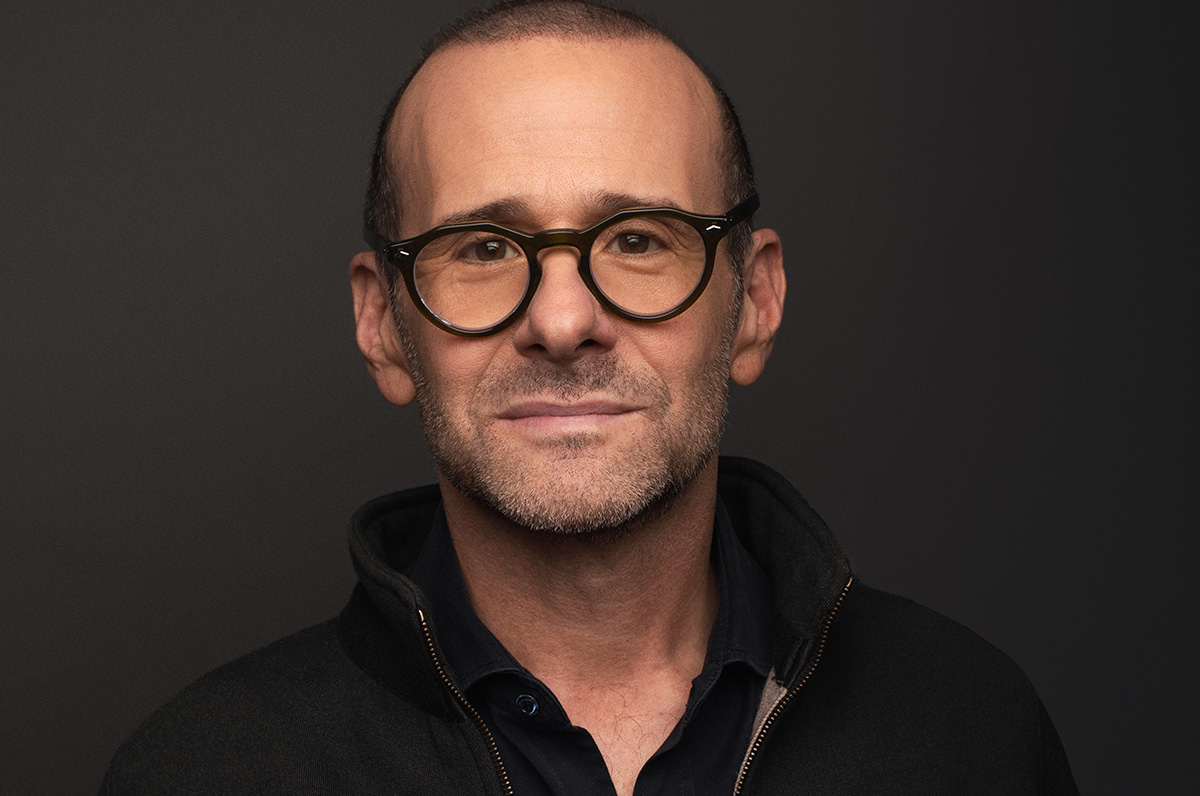
It’s been a long time – maybe 25 years when “Will & Grace” debuted – since there’s been so much excitement about a new, queer sitcom premiering. “Mid-Century Modern,” which debuted on Hulu last week, is the creation of Max Mutchnick and David Kohan, the gay men who were also behind “Will & Grace.”
Set in Palm Springs, Calif., following the death of the one of their closest friends, three gay men gather to mourn. Swept up in the emotions of the moment, Bunny (Nathan Lane) suggests that Atlanta-based flight attendant Jerry (Matt Bomer) and New York-based fashion editor Arthur (Nathan Lee Graham) move into the mid-century modern home he shares with his mother Sybil (the late Linda Lavin). Over the course of the first season’s 10 episodes, hilarity ensues. That is, except for the episode in which they address Sybil’s passing. The three male leads are all fabulous, and the ensemble cast, including Pamela Adlon as Bunny’s sister Mindy, and the stellar line-up of guest stars, such as Jesse Tyler Ferguson, Vanessa Bayer, Richard Kind, and Cheri Oteri, keep humor buzzing. Shortly before the premiere of “Mid-Century Modern,” Mutchnick made time for an interview with the Blade.
BLADE: I’d like to begin by saying it’s always a delight to speak to a fellow Emerson College alum. In ways would you say that Emerson impacted your professional and creative life?
MAX MUTCHNICK: I think Emerson was the first place that reflected back to me that my voice, my thoughts were good, and they were worth listening to. I developed a confidence at Emerson that did not exist in my body and soul. It was a collection of a lot of things that took place in Boston, but I mean we can just put it all under the Emerson umbrella.
BLADE: Before “Will & Grace,” you co-created the NBC sitcom “Boston Common,” which starred fellow Emerson alum Anthony Clark. Is it important for you to maintain those kinds of alumni relationships?
MUTCHNICK: Because Emersonians are such scrappy little monkeys and they end up being everywhere in the world, you can’t help but work with someone from Emerson at some point in your career. I’m certainly more inclined to engage with someone from Emerson once I learn that they went to my alma mater. For me, it has much more to do with history and loyalty. I don’t think of myself as one of those guys that says, “Loyalty means a lot to me. I’m someone that really leans into history.” It’s just what my life and career turned out to be. The longer I worked with people and the more often I worked with them, the safer that I felt, which means that I was more creative and that’s the name of the game. I’ve got to be as comfortable as possible so I can be as creative as possible. If that means that a person from Emerson is in the room, so be it. (Costume designer) Lori Eskowitz would be the Emerson version. And then (writer and actor) Dan Bucatinsky would be another version. When I’m around them for a long time, that’s when the best stuff comes.
BLADE: Relationships are important. On that subject, your new Hulu sitcom “Mid-Century Modern” is about the longstanding friendship among three friends, Bunny (Nathan Lane), Jerry (Matt Bomer), and Arthur (Nathan Lee Graham). Do you have a friendship like the one shared by these three men?
MUTCHNICK: I’m absolutely engaged in a real version of what we’re projecting on the show. I have that in my life. I cannot say that I’m Jerry in any way, but the one thing that we do have in common is that in my group, I’m the young one. But I think that that’s very common in these families that we create. There’s usually a young one. Our culture is built on learning from our elders. I didn’t have a father growing up, so maybe that made me that much more inclined to seek out older, wiser, funnier, meaner friends. I mean the reason why you’re looking at a mouthful of straight, white teeth is because one of those old bitches sat across from me about 25 years ago at a diner and said, “Girl, your teeth are a disaster, and you need to get that fixed immediately.” What did I know? I was just a kid from Chicago with two nickels in my pocket. But I found three nickels and I went and had new teeth put in my head. But that came from one of my dearest in the group.
BLADE: Do you think that calling “Mid-Century Modern” a gay “Golden Girls” is a fair description?
MUTCHNICK: No. I think the gay “Golden Girls” was really just used as a tool to pitch the show quickly. We have an expression in town, which is “give me the elevator pitch,” because nobody has an attention span. The fastest way you can tell someone what David (Kohan) and I wanted to write, was to say, “It’s gay Golden Girls.” When you say that to somebody, then they say, “OK, sit down now, tell me more.” We did that and then we started to dive into the show and realized pretty quickly that it’s not the gay “Golden Girls.” No disrespect to the “Golden Girls.” It’s a masterpiece.
BLADE: “Mid-Century Modern” is set in Palm Springs. I’m based in Fort Lauderdale, a few blocks south of Wilton Manors, and I was wondering if that gay enclave was ever in consideration for the setting, or was it always going to be in Palm Springs?
MUTCHNICK: You just asked a really incredible question! Because, during COVID, Matt Bomer and I used to walk, because we live close by. We had a little walking group of a few gay gentlemen. On one of those walks, Matt proposed a comedy set in Wilton Manors. He said it would be great to title the show “Wilton Manors.” I will tell you that in the building blocks of what got us to “Mid-Century Modern,” Wilton Manors, and that suggestion from Matt Bomer on our COVID walks, was part of it.
BLADE: Is Sybil, played by the late Linda Lavin, modeled after a mother you know?
MUTCHNICK: Rhea Kohan (mother of David and Jenji). When we met with Linda for the first time over Zoom, when she was abroad, David and I explained to her that this was all based on Rhea Kohan. In fact, some of the lines that she (Sybil) speaks in the pilot are the words that Jenji Kohan spoke about her mother in her eulogy at the funeral because it really summed up what the character was all about. Yes, it’s very much based on someone.
BLADE: The Donny Osmond jokes in the second episode of “Mid-Century Modern” reminded me of the Barry Manilow “fanilows” on “Will & Grace.” Do you know if Donny is aware that he’s featured in the show?
MUTCHNICK: I don’t. To tell you the truth, the “fanilow” episode was written when I was not on the show. I was on a forced hiatus, thanks to Jeff Zucker. That was a show that I was not part of. We don’t really work that way. The Donny Osmond thing came more from Matt’s character being a Mormon, and also one of the writers. It’s very important to mention that the writing room at “Mid-Century Modern,” is (made up of) wonderful and diverse and colorful incredible humans – one of them is an old, white, Irish guy named Don Roos who’s brilliant…
BLADE: …he’s Dan Bucatinsky’s husband.
MUTCHNICK: Right! Dan is also part of the writing room. But I believe it was Don who had a thing for Donny, and that’s where it comes from. I don’t know if Donny has any awareness. The only thing I care about when we turn in an episode like that is I just want to hear from legal that we’re approved.
BLADE: “Mid-Century Modern” also includes opportunities for the singers in the cast. Linda Lavin sang the Jerome Kern/Ira Gershwin tune “Long Ago (And Far Away)” and Nathan Lane and the guys sang “He Had It Coming” from “Chicago.” Was it important to give them the chance to exercise those muscles?
MUTCHNICK: I don’t think it was. I think it really is just the managers’ choice. David Kohan and I like that kind of stuff, so we write that kind of stuff. But by no means was there an edict to write that. We know what our cast is capable of, and we will absolutely exploit that if we’re lucky enough to have a second season. I have a funky relationship with the song “Long Ago (And Far Away).” It doesn’t float my boat, but everybody else loved it. We run a meritocracy, and the best idea will out. That’s how that song ended up being in the show. I far prefer the recording of Linda singing “I’ll Be Seeing You” over her montage in episode eight, “Here’s To You, Mrs. Schneiderman.” We were just lucky that Linda had recorded that. That recording was something that she had done and sent to somebody during COVID because she was held up in her apartment. That’s what motivated her to make that video and send it. That’s how we were able to use that audio.
BLADE: Being on a streaming service like Hulu allows for characters to say things they might not get away with on network TV, including a foreskin joke, as well as Sybil’s propensity for cursing.
MUTCHNICK: And the third line in the show is about him looking like a “reluctant bottom.” I don’t think that’s something you’re going to see on ABC anytime soon. David and I liked the opportunity to open up the language of this show because it might possibly open the door to bringing people…I’m going to mix metaphors…into the tent that have never been there before. A generation that writes off a sitcom because that language and that type of comedy isn’t the way that they sound. One of the gifts of doing this show on Hulu is that we get to write dialogue that sounds a little bit more like you and I sound. As always, we don’t want to do anything just to do it.
BLADE: It didn’t feel that way.
MUTCHNICK: It’s there when it’s right. [Laughs] I want to have a shirt made with Linda’s line, as her mother always used to say, “Time is a cunt.”
BLADE: “Mid-Century Modern” also utilizes a lot of Jewish humor. How important is it for you to include that at this time when there is a measurable rise in anti-Semitism?
MUTCHNICK: I think it’s important, but I don’t think it’s the reason why we did it. We tried very hard to not write from a place of teaching or preaching. We really are just writing about the stuff that makes us laugh. One of the things that makes something better and something that you can invest in is if it’s more specific. We’re creating a character whose name is Bunny Schneiderman and his mother’s name is Sybil and they made their money in a family-run business, it gets Jewy, and we’re not going to shy away from it. But we’re definitely not going to address what’s going on in the world. That doesn’t mean I don’t find it very upsetting, but I’m writing always from the point of view of entertaining the largest number of people that I can every week.
BLADE: “Mid-Century Modern” has a fantastic roster of guest stars including Jesse Tyler Ferguson, Vanessa Bayer, Billie Lourd, Cheri Oteri, Richard Kind, Rhea Perlman, and Judd Hirsch. Are there plans to continue that in future seasons?
MUTCHNICK: Yes. As I keep saying, if we’re so lucky that we get to continue, I don’t want to do “The Love Boat.” Those are fine comic actors, so I don’t think it feels like that. But if we get to keep going, what I want to do is broaden the world because that gives us more to write about. I want to start to introduce characters that are auxiliary to the individuals. I want to start to meet Arthur’s family, so we can return to people. I want to introduce other neighbors, and different types of gay men because we come in so many different flavors. I think that we should do that only because I’m sure it’s what your life is and it’s what my life is. I’ve got a lot of different types. So, yes, we will be doing more.
BLADE: Finally, Linda Lavin passed away in December 2024, and in a later episode, the subject of her character Sybil’s passing is handled sensitively, including the humorous parts.
MUTCHNICK: We knew we had a tall order. We suffered an incredible loss in the middle of making this comedy. One of the reasons why I think this show works is because we are surrounded by a lot of really talented people. Jim Burrows and Ryan Murphy, to name two. Ryan played a very big role in telling us that it was important that we address this, that we address it immediately. That we show the world and the show goes on. That wasn’t my instinct because I was so inside the grief of losing a friend, because she really was. It wasn’t like one of those showbizzy-type relationships. And this is who she was, by the way, to everybody at the show. It was the way that we decided to go. Let’s write this now. Let’s not put this at the end of the season. Let’s not satellite her in. Let’s not “Darren Stevens” the character, which is something we would never do. The other thing that Jim Burrows made very clear to us was the import of the comedy. You have to write something that starts exactly in the place that these shows start. A set comedy piece that takes place in the kitchen. Because for David and me, as writers, we said we just want to tell the truth. That’s what we want to do with this episode and that’s the way that this will probably go best for us. The way that we’ve dealt with grief in our lives is with humor. That is the way that we framed writing this episode. We wanted it to be a chapter from our lives, and how we experience this loss and how we recover and move on.
a&e features
Over a dozen renowned queer poets, authors to come together for literary event
Precinct DTLA will host free event celebrating poetry

During a time when members of politics seem hell-bent on keeping queer voices silenced, Los Angles continues to be home to a thriving, queer community of poets. On March 28th at 5 pm, 19 renowned LGBTQ+ poets and authors from across the country will be tongue tied at Precinct in Downtown Los Angeles for a free poetry event titled ‘Tongue Tied.’
This group of writers will be reading their queerest work while shibari bondage artist Jupiter will create rope ties on the poets while they perform. The night asks: what does it mean to create under restraint?
The mastermind behind Poetry Unbound is Brian Sonia-Wallace, a leading figure in the literary world with published work and who also served as the 4th Poet Laureate of West Hollywood. He is also a performance artist who has written poetry for strangers in the most unconventional of ways. We talked with Sonia-Wallace about his career, the literary community in L.A and what to expect from the event.
What was your first exposure to poetry, and what attracted you to get into that literary genre?
I was a fantasy nerd growing up and loved the songs and spells in Tolkien, CS Lewis, Ursula Le Guin, and Susan Cooper. The idea that you could invent a world with words — and new languages to inhabit that world — blew my little gay mind. Wizards always need a magic word.
This has, I think, affected my view of poetry in the world. I have, well, an academic interest in poetry’s history and structure, but I’m more curious about how pure language can short-circuit our ability to feel. People use poetry — at weddings, at funerals, on anniversaries. I think the goal of all artists is to say the ‘unsayable’ and in that little piece of magic make it suddenly sayable by anyone. Poetry feels to me like the most pure way to do this.
How does your queerness add to your poetry?
I think queer people are natural poets — we’re masters of the ‘unsayable.’ We’ve all had long conversations with ourselves before deciding whether or not to let anyone in.
As a type of performance art meets poetry, you have literally written poetry for strangers on the street. What is your mission with this type of writing?
Capitalism, baby! Honestly, this is how I accidentally started my business (we do lots of everything from weddings to corporate events to museums now with poets at typewriters).
But getting a little deeper, let me share this passage from my book:
“It seems to me that most people just need their stories to be heard. And that need is the right word. That we lose something when our stories are not heard. That something not only in us, but in the world, dies.
With every poem I write, I remember that the value of a story doesn’t depend on how many likes or retweets it gets, or how many people it reaches.
Sometimes, just one person hearing a story — is enough.”
-The Poetry of Strangers
Does any particular stranger you wrote for stick out in your memory?
So we did an event this week for Sketchers (thanks for the shoes, Sketchers!) where I got to write for various shoe executives from around the country. Almost all the women wanted poems about their kids, toddlers or young adults, on whom these mothers had spent so many thankless hours. About half of them cried, hearing their stories reflected back – having them witnessed. How often is that love and labor seen and acknowledged?
Likewise, one young man spent 15 minutes just pouring out his gratitude for his mom. She was his biggest cheerleader growing up, and when he packed up to move for this job a quilt she made him was the first thing he packed and unpacked. Who else can a man gush to about his mom?
Finally, an older man, from the South, white-haired, almost-military-bearing. Traditional, you understand. Who knows how he voted? I didn’t ask. He wanted a poem for his mom. The first thing he told me was that she was an alcoholic, but had been sober 30+ years, ever since his daughter was born and he’d given her an ultimatum: booze or the grandkid. The grandkid won. And now grandma was dying of cancer, he felt guilty his wife was taking care of her back home. His mom could always laugh at herself, he told me. He remembered when he was six her running down the sidelines with him all the way to a touchdown in a peewee football game.
After I read him his poem, he hugged me so hard the event photographer practically jumped on top of us and started snapping photos, eager to capture the emotion.
It’s become cliche to talk about the crisis of masculinity in the US. What these experiences show me is that there’s a vulnerability and even an eagerness to engage with it, but we’re not always helping people find the tools. Therapy is one. But so’s poetry. So’s bowling. You know. Being with people. Seeing and being seen.
You also served as the fourth West Hollywood City Poet Laureate for a number of years. What was your biggest accomplishment or best memory from serving in that position?
The Laureateship taught me so much and really helped me feel like I could and should speak about and with our community. I think I’m most proud of helping re-start the APLA Health Writers’ Group for older adults living with HIV, which has existed since 1989 but was defunct until we relaunched it on Zoom during the COVID lockdowns. That, or the poetry walk on Santa Monica Blvd on the median strip west of The Abbey, check it out!
One of my goals is always to bring poetry to unlikely places, and where better to start in WeHo than the gay bars on the Santa Monica Blvd strip? We started an open mic at Micky’s and now are at The Wild (check out our UnBound series, March 19 is the next one!) — it’s been a joy running an event that focuses on people’s voices and stories in places that are often purely physical, and creating a platform for hundreds of artists in our community.
Tongue Tied — what is the correlation between poetry and shibari?
When Jupiter first tied me up I knew I had to get him for a poetry show. The work he does with shibari, the exploration of discomfort and trust, felt weirdly similar to what I do, emotionally, at the typewriter. It’s about a moment of intentionality and slowing down that has the potential to be transformational.
That said, I’m also a theater person and get bored at poetry readings. I need visuals! Cue: watching poets get tied up. I love the juxtaposition, the reminder that these minds are also bodies, and the challenge to the poets to not just come do their usual schtick but to have a genuine, first-time moment with their work and with all of us.
You have quite an impressive group of poets for this event, how did you gather them all together?
Gosh, some great people said yes, didn’t they? These queens have Pulitzers and professorships. I’ve attended the AWP Conference for three years now, and built relationships through that time — but I’ve also just been a fan and asked! There’s nothing like when your idol says they’ll do your show.
What do you want the audience to walk away with the most from experiencing Tongue Tied?
I hope they leave tongue-tied! Ok, ok, I couldn’t resist. I hope folks will go away having seen something they’ve never seen before and will never see again, that they find their new favorite artist, befriend their idol, and, if they’ve never written a poem before, promptly go and do so.
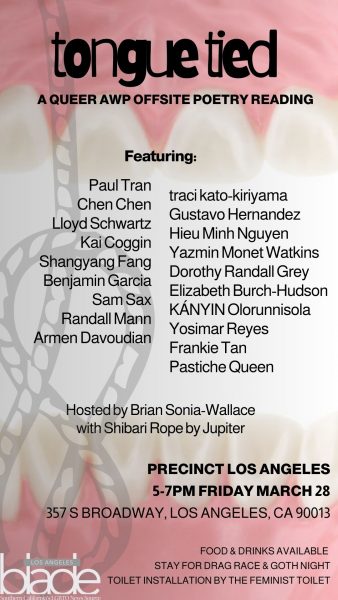
Tell us about the thriving queer poetry community in Los Angeles.
LA is one of those cities where I’m constantly finding out about new events and pockets I’d never heard of. The Nonfiction Show at Nico’s Wines in Glendale? So cool! Empty Trash (formerly at The Ruby Fruit)? How do they get these writers?! Act 3 Open Mic in DTLA (@act3openmic)? So many queer rappers practicing their craft.
And that’s not counting the bookstores. I don’t know if you’ve been following the news, but reading is gay now. Always has been.
What are the biggest challenges facing a queer poet in today’s social and political climate?
It’s a sign of my middling success in the literary world that none of my books has been banned yet, and I’ve been known to talk about trans witches and pups getting fisted, so go figure. But we know about book banning.
I think the thing we’ll be seeing coming up is a shift in our language. Queer folks have always developed their own language to pass undetected (think Polari) and now as we’re seeing the widespread destruction of funding and even mention of anything BTQ+ and even LG, I’m thinking with some smart people about how to shore up support at the local level and lie convincingly, in a way that lets only friend in, at the national level.
It’s bleak, but we’ve always found each other. Always will.
What else can we look forward to from your group this year?
Pride Poets will be at the WeHo/LGBT Center’s Pride Arts Festival, and partnering with Beverly Hills to help with their 4th ever Pride celebration — and look out for some poetics at World Pride in DC as well! I have a commission out there premiering that week at a certain highly reputable institution with a new cheeto-haired chairman, if I don’t blow it by being too gay first.
What is your message to the queer community?
Be gay, do crime.
Always gotta lead with that. But really: find your people, trust your people are out there, and don’t be afraid of anyone, especially yourself.
Event Details:
Location: Precinct, 357 S Broadway, Los Angeles, CA 90013
Date & Time: Friday March 28, 5-7 pm
Free Admission
The featured poets include Pulitzer Prize winners, Poets Laureate, professors, activists, and published authors: Paul Tran, Chen Chen, Lloyd Schwartz, Kai Coggin, Shangyang Fang, Benjamin Garcia, Sam Sax, Randall Mann, Armen Davoudian, Gustavo Hernandez, Hieu Minh Nguyen, Yazmin Monet Watkins, Dorothy Randall Grey, Elizabeth Burch-Hudson, KÁNYIN Olorunnisola, Yosimar Reyes, Frankie Tan, and Pastiche Queen.
a&e features
Interview with Actor D.K. Uzoukwu shines light on new role
Uzoukwu chatted about his family, career, self-discovery journey and joining the Norman Lear legacy
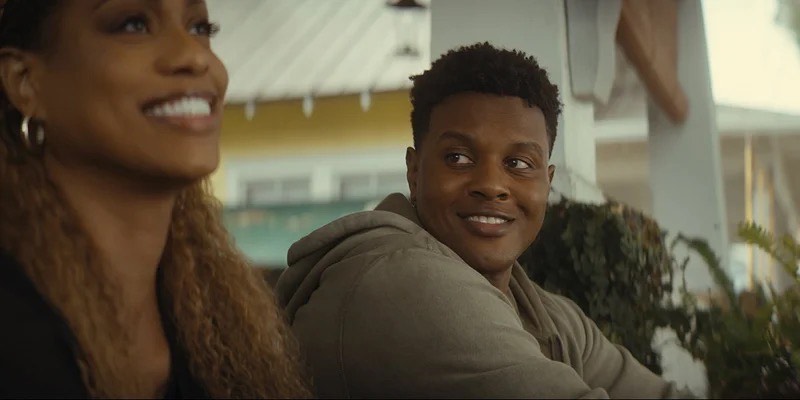
Uzoukwu is enjoying his time in the spotlight, holding his own alongside Laverne Cox and comedy great, George Wallace in Norman Lear’s last comedy. Clean Slate centers on Desiree (Cox), a proud trans woman who is finding her footing in life as she returns to her small hometown and tries to re-build a relationship with her father (Wallace) as his now-daughter.
The show is a comedy with many touching moments and comes at a time when trans representation is so needed. Uzoukwu shines as Desiree’s best friend Louis a closeted gay man who serves as the local church’s choir director. Together the two find their way.
Uzoukwu is also a 2021 Acting Fellow of the Hillman Grad Mentorship Program, led by Lena Waithe. He is also a writer and co-wrote two seasons of Issa Rae’s audio drama “Fruit,” and has been Reader-Endorsed on The Black List for his award-winning spec pilot “Kinfolk.”
We chatted with Uzoukwu about his family, career, self-discovery journey and joining the Norman Lear legacy.
He credits a strong family foundation for teaching him the tools for life as a proud son of immigrant parents.
“I was raised first generation by very proud Nigerian parents, who definitely had their sights set on me being a doctor or a pharmacist. Those are very stable jobs, especially in a country that doesn’t really give you a lot of breaks as an immigrant, even more. They just wanted something that was stable for me. My parents have shown me just what it takes to live in this country as an immigrant. The tenacity, the persistence, the strive to be better. They instilled all of those attributes in me.”
Despite Uzoukwu’s parents wanting him to work in a stable profession, they came to support his dream to become an actor. He ended up graduating cum laude from Temple University, with a Bachelors in Film and Theatre.
“They chose to support my dreams instead of admonishing me for them and it takes a very open and honest heart to say, ‘I want my child to be the best they can be in whatever they choose to do in this life, because it’s their life and not mine.’ That isn’t always easy for parents, but especially more so for immigrant parents, especially Nigerian parents, that’s just something that we did not grow up with. So beyond the tenacity and the perseverance, they also taught me unconditional love and support and those are attributes that I carry with me to this day. They were with me at the [Clean Slate] premier and it was just great to have my father and mom there by my side. It’s a dream come true.”
In typical Norman Lear style, Clean Slate pushes the envelope and makes current hot topics part of the norm. The show deals with trans and queer community narratives, deals with self-acceptance in the face of bigotry, faith v. religion struggles and questions what exactly a family looks like in today’s age. The show, which focuses on a Black family, is part of the current boom in queer storylines in minority-driven programming.
Uzoukwu explains the increase in representation:
“I just think we are more aware of what’s out there. We have so much more access to other people’s lives at our fingertips. Social media has been a very huge plus in that respect. In a way, it has normalized the idea of having queer people in our lives. We always have, we just weren’t allowed to really be public about it. But now it is normalized and hopefully even more so going forward. I think there is a little bit of a pushback. People talk about a pendulum swing right now, but I think that it forces us to be even more brave and adamant about staking our place in society. We have a right to be here. We all have a right to exist and pursue lives of love and freedom, our God-given rights. I think the more we press forward and continue to live our lives, the more that presence and existence will be seen in our media because we are what we see.”
Uzoukwu nailed his audition for Clean Slate. Reading the sides, he resonated at once with the character of Louis. He sent in his audition tape – which also required singing and two and a half weeks later – he did his screen test. Then BOOM, it was booked. As a queer actor, did Uzoukwu have any trepidation about taking this role for fear of being pigeon-holed?
“There’s always going to be fears about only being seen as one thing. I’m not going to lie, I did kind of have that fear. But I get that anytime I do a bigger project that kind of feels like something that could establish me as a performer in other people’s eyes. You watch a great performance of somebody and you’re like, wow, I could only see them as that. That is something that happens a lot. So there’s always that fear, but I don’t know if it’s something that I necessarily have to worry about. My team is very aware of my talent and what I can do, so my goal is to just go out and try to play as many parts as I can. I just want to keep looking forward and see what else is next, hopefully a season two. Fingers crossed!”
With Norman Lear’s recent passing, being part of the legacy that created All in the Family, One Day at a Time, Maude, The Jeffersons, and so many others, is an actor’s dream. Especially for someone as young as Uzoukwu.
“I definitely still have to pinch myself sometimes when I think about that aspect. I never really saw myself being a comedy actor when I first started out. I thought I was just so much better at drama. So for me to land my first big role in a comedy is kind of like, ‘Oh, you thought you knew what you were about? You thought you knew what you could do, but God had a different story for you.’ You just don’t know what the world, what life will bring. So to be a part of a comedy like this, but also one that is connected to that legacy is a huge deal.
I definitely don’t take it for granted. It means the world to me. When we talked about the show and sort of leading the charge on telling stories of other people and how we can all coexist, he was that person for generations. To be a part of his last comedy is truly a gift. You never could have had me predict that for my future.”
Uzoukwu hopes his personal journey serves as an example for other actors. His message to the community is also his message to himself.
“I spent a lot of time trying to figure out what kind of person I wanted to be in this industry, whether or not I was going to be comfortable enough to come out and be an out gay actor in Hollywood. I didn’t know if it was the smart choice or the right choice.
I realized that in order for me to really tell the stories the way they needed to be told, I had to commit to an identity for myself. I had to choose to be comfortable with myself. That’s something I hope future generations don’t have to sort of battle with or try to figure out for themselves that they can just be and that’s okay. It wasn’t always the case. I am glad that I took this circuitous journey to choose myself. I hope that the community continues to choose themselves and that they don’t feel that they have to decide between safety and freedom, that we can have both. Because we deserve both.”
Clean Slate is now streaming on Prime.
a&e features
Pose’s Dyllón Burnside takes on most ambitious role yet in latest film
In this Blade exclusive, actor Dyllón Burnside gives us a candid look at his latest role
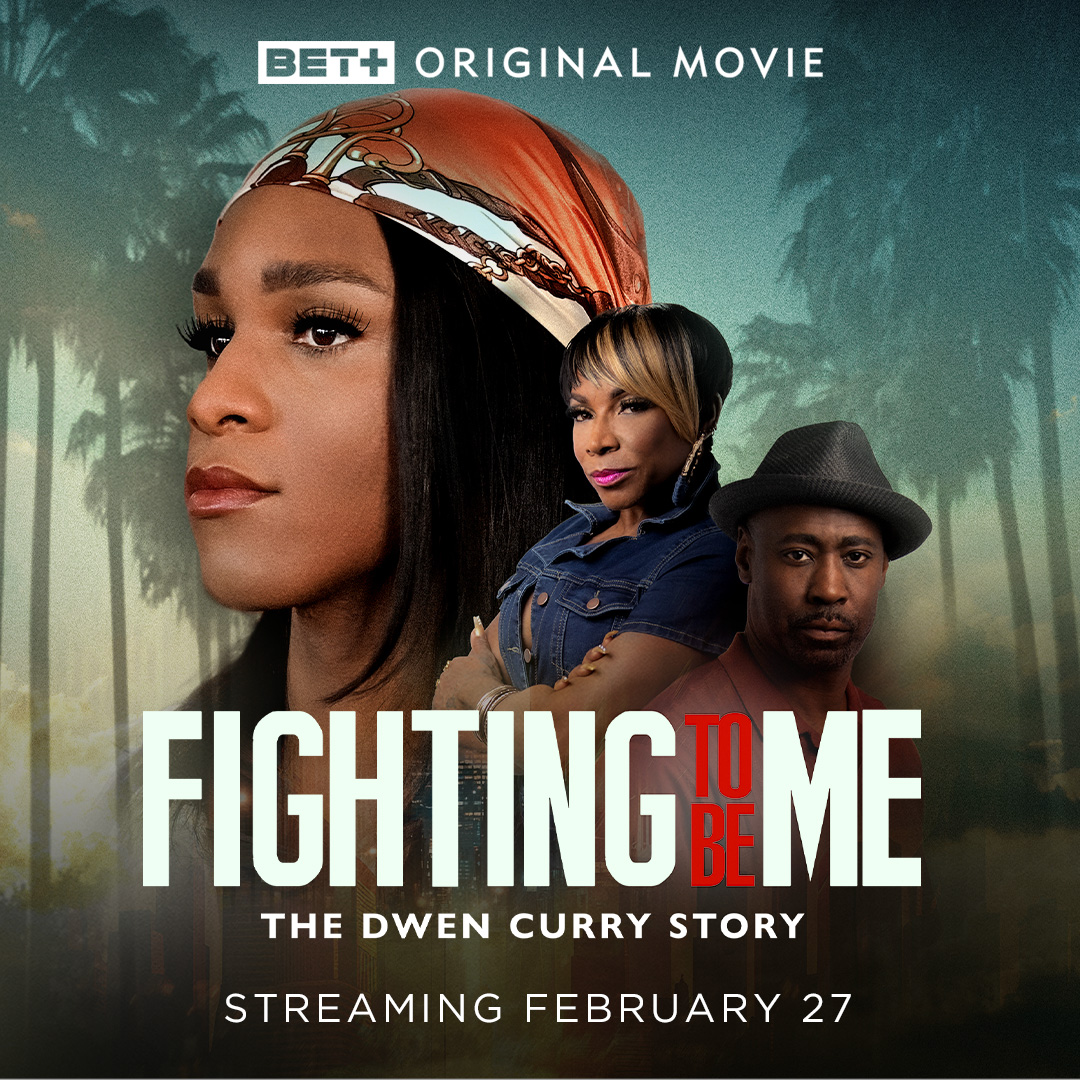
Actor Dyllón Burnside made an impressionable splash by playing Ricky Evangelista in FX’s Pose. Not only was he able to infuse sincerity and pathos into his role, but he has used his platform to speak against toxic masculinity, advocate for LGBTQ safe spaces and inspire activism.
Recently, he has partnered with BET+ for the film Fighting To Be Me, playing perhaps his most ambitious role to date. Dyllón plays Dwen Curry in a new biopic where he plays a celebrity stylist known for working with big names like Missy Elliott, DMX, Mariah Carey and more.
Leading a double life in many ways, Dwen also spearheaded a multi-million dollar fraud ring that came to be known as The Gay Gangsters. The film is part true crime, part Hollywood glam and all LGBTQ+ storytelling. The film is about family, identity, survival and self-acceptance as Dwen transitions from a gay man, to a proud transgender woman.
The film comes at a crucial time, where the nation is experiencing cutbacks in DEI initiatives that are affecting both the Black and the queer community. Fighting To Be Me is the latest in BET+’s efforts to highlight stories from the queer community.
Representing both the Black and queer communities in this film, it was essential for Dyllón to portray Dwen in a way that was both truthful and sincere.
We chatted with Dyllón ahead of the film’s premiere about his experience.
“It’s unlike any other project that I’ve been a part of. I have my processes and the things that I do as an actor to prepare that are my baseline. It’s rooted in my background in the theater and the things that I learned from my teachers in drama school and the different directors that I’ve worked with.”
But this process, while those things definitely helped Dyllón, there was so much of that, that Dyllón couldn’t pull from. He says he had to really stretch himself to immerse himself in Dwen’s story and world.
“I had a lot of conversations with her. It required me to be more curious than I think I’ve ever been in a role. I’m a seeker in that way, and I think that’s what I really love about working as an actor is really that process of discovery and getting curious and finding connections and doing the research. I love that kind of stuff.”
Dyllón was not familiar with Dwen’s story at first. After reading the script, he was compelled to tell her story, but it was imperative that he received the blessing from Dwen herself.
“I needed to have a conversation with her to make sure that she wanted me to play her. I wanted to be clear that this person, this trans person wants me to play them and they feel like I am the right person to portray them in this story. We had a beautiful conversation and it was that talk, just getting to look her in her eyes and understand her heart that made me decide I want to be a part of this project.”
Fighting To Be Me comes at a time when the nation is divided. Dyllón’s involvement as both the star and as one of the film’s executive producers is a testament to his belief that now is the time for this story to be shared.
“When we look at the times that we’re living in, when trans people are being attacked daily by the current administration, it is really troubling. The dehumanization of trans folks has gotten out of hand. I think we need to all have the opportunity to sit with the fact that my lived reality is not the same as someone else’s reality, but that doesn’t make their lived reality any less human or any less important or any less true.”
“I think that one of the beautiful things about this story is that it’s unlike any other story that I’ve ever heard or told. Yes, there’s the trans element, but it’s a full life story. It’s important to talk about trans issues as a means of advocacy. I’m also really interested in talking about Dwen Curry as a human being. What are the circumstances that conspired to create the situations that forced Dwen Curry to make the decisions that Dwen Curry made? We’re talking about the socioeconomic climate of the eighties. We’re talking about the politics of the eighties. We’re talking about HIV and AIDS. We’re talking about the stigma around being queer. We’re talking about poverty. All of these issues conspire to create a situation where the wind has to make certain decisions in order to survive and thrive.”
According to Dyllón, the story directly relates to what is happening right now. He elaborates:
“So many of us find ourselves in that position right now where there are all of these different systems and institutions that seem to be closing in around us and putting us between a rock and a hard place. We have to figure out how to stay true to ourselves. How do we protect ourselves? How do we eat? How do we stay safe from the cops shooting us down in the streets or from some person who hates us because of the color of our skin, or our gender or sexual identity? All of these things create a situation for people that drives them to make really hard decisions. And I think I’m more critical of those systems than I am the individual who is forced to exist in those systems.”
BET+’s inclusion of queer stories is a milestone. Typically, minority programming was resistant to talking about queer people. As part of that representation with Pose and now with this film, Dyllón has his take on the growing trend of inclusion.
“I may not say that minorities don’t celebrate folks, but I will say that historically we’ve seen that the media companies across the board have not supported stories. I think folks see we’re able to recognize the cultural impact as well as the fiscal benefits of telling more inclusive and expansive stories about who we are, who we get to be. I hope that continues. I hope we continue to see that in spite of all of the efforts to roll back DEI, and that media companies will stand firm in their commitment and desire to tell stories, real authentic stories about real authentic people.”
Totally giving himself over to the portrayal of Dwen on her journey of self-discovery and acceptance, Dyllón has started to look at his own relationship with identity and being true to himself. It is the message he has for himself, it is the message he has to his fans.
“One of the things that I’m really striving for in my life is integration, this idea that I don’t have to be a separate human being with my family that I am with my friends, that I am at work on set, that I am on stage, performing my music, that I am in the recording studio, that I am when I give a speech somewhere as the advocate in a political space. I don’t have to compartmentalize myself in those ways and I get to bring all of myself to every space that I’m in, even if that means I’m overwhelmed, or I’m tired, or I’m stressed, or I’m afraid.
The conversation that I’m having with myself in this moment, and by extension having with my audience, is this message around integration. And standing firmly 10 toes down in the truth of who I am and allowing that to be messy and allowing that to be uncertain and weird and to be unapologetic about the messiness and the weirdness and the lack of clarity.
Just show up as your full self wherever you find yourself and trust that your spirit will lead you and guide you in the way that you should go. Unplug from social media and get outside.”
Fighting to Be Me: The Dwen Curry Story is now available on BET+
a&e features
Margaret Cho Returns to Music with ‘Lucky Gift’
In her first music release in 8 years, Margaret Cho is back with a new album…and a lot to say!
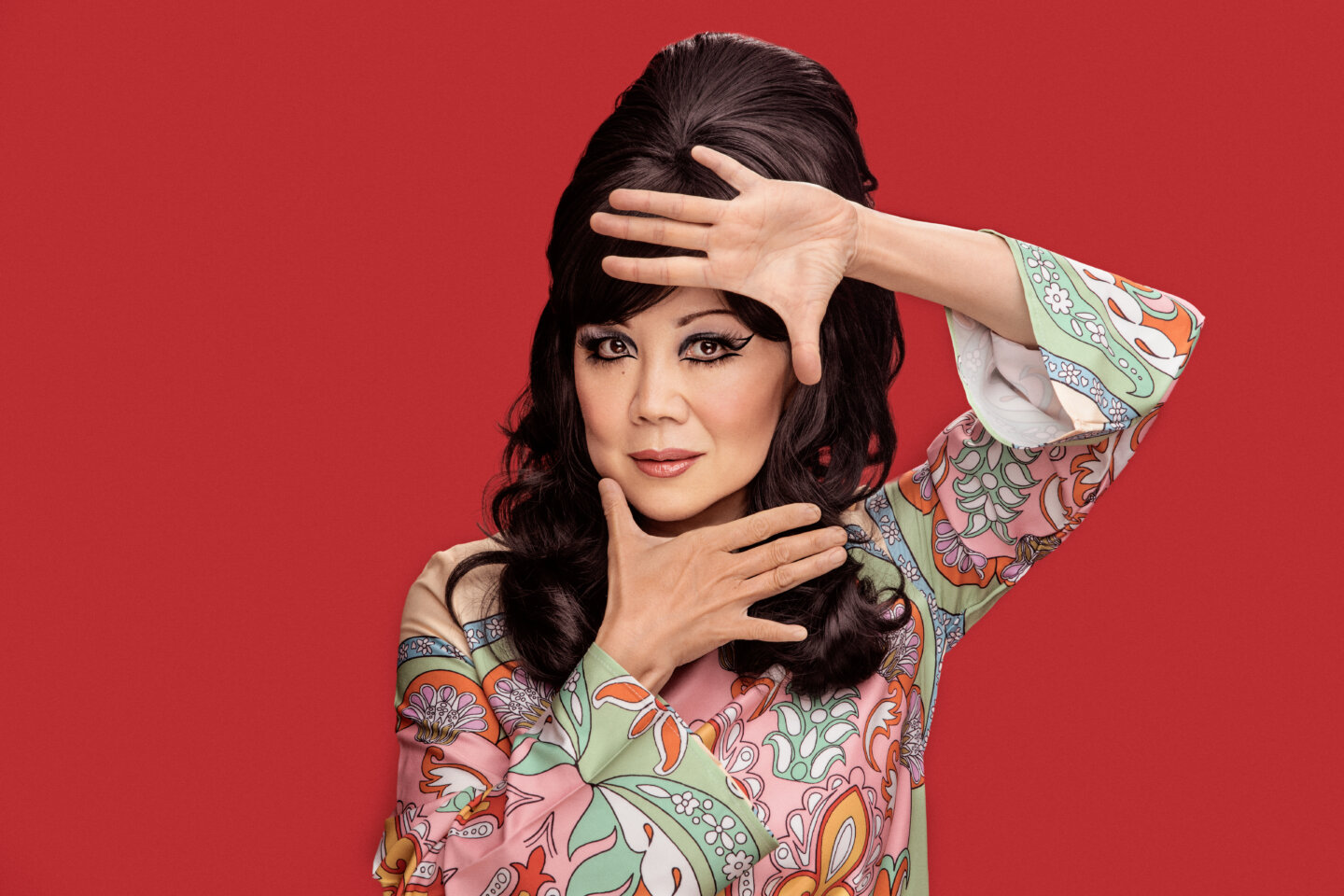
It has been 8 years since Margaret Cho released her Grammy-nominated American Myth album. She’s back to the music scene with her new album, Lucky Gift, an 11-track collection of anthems and pop tunes, a tribute to Robin Williams, and a shout-out to non-binary and gender non-conforming people.
The album captures the whirlwind that is Margaret and all of the different facets of her talents that have made her a powerhouse in entertainment and a leader in activism. In Lucky Gift, she’s getting her point across while having fun and getting glam.
We caught up with the activist and artist to chat about her music, our political climate, and
Known for her comedy, acting and activism, she felt it was long overdue to get her music back out there too.
Cho shares some insight on her next moves:
“I make music often. It’s a part of my daily life, it’s a big part of my social life, and it’s just something that I just love to do for my own relaxation and fun. I had enough for an album and I wanted to finally put them out. I was just really proud of how it all sounded together,” shares Cho.
“It’s a power pop record. For me, the songs are really meaningful. They’re all in their own way love songs. I’m a big fan of my own music (laughs), I really like the way that I sound and it’s really special to do. People know me as a comedian, and I have also made music for a long time, but it’s sort of a side project, and so it was time to put more out again.”
Her album also includes a touching tribute to Robin Williams. The entertainment community is finally more comfortable talking about mental health more openly. When relating mental health to her own life, Margaret, in true Margaret form, quickly turned the conversation to reflect today’s political climate.
“I have to maintain a level of peace and quiet and sometimes maybe get away from the news, although that’s tough because I am obsessed. I want to know what is happening. I’m really worried for our community, especially the trans community. I’m worried that this Administration is trying to separate T and the Q from the LGBTQIA, and it’s really frightening.”
As an elder, Cho says she has to also remember that we’ve been through this before and it’s actually been much worse. The LGBTQ+ community has been through a similar situation and at that point we were facing down a pandemic which was killing the community by the millions. Now, Cho says at least we don’t have to fight AIDS, as well as this onslaught of homophobia.
“We have fought for our rights, and we still have them, but we may not have them for long. So our mental health is very important to preserve now because we have to fight. The one thing to remember is they can’t do everything at once. They can’t take away trans rights, queer rights, gay rights, gay marriage, antidepressants (ha!) at the same time. So what we can do is just try to remain as calm as possible and fight as strongly as we can. But yeah, mental health is really vitally important right now.”
Cho’s long history of queer activism stands for itself. She does not shy away from current issues, she uses her platforms to incite, educate, and question. For Margaret, there is no time off from being an activist. She was born into it, so to speak, being raised in San Francisco in the 1970s, her parents the owners of a gay bookstore and their employees, followers of Harvey Milk.
“My activism is that I don’t have a choice. I’m going to be an activist no matter what. We’re doing this together, we’re going through this together. I will always be political. It’s just disheartening to see the ignorance of people and the lies that are being told that are believed.”
Lucky Gift comes at a perfect time when the queer community can come together over music. Cho looks at her album as a tool to empower an underdog community through the power of music.
“It’s the triumph of pop above all. We need to look to our pop divas above all. So now I’m more than ever, leaning on Madonna. Thank God for [Lady Gaga’s] “Abracadabra” because I think that things like that boost our community so much. When you can just get together and have a “brat summer,” that boosts our community so much in this togetherness, this explosion of excitement. I think Chappell Roan really ignited the pop capacity for healing. I love Lucky Gift because it is my stepping into a pop diva moment. Pop Divas should not be discounted for how important they are to our society and how much they lift us up.”
In addition to releasing her new album, Margaret will continue to hit the road this year with her Live and LIVID! Tour, celebrating over four decades of live stand-up shows. On this tour, she promises to rage about homophobia, sexism, racism, and the fight to stay alive. The five-time Grammy and Emmy-nominated performer is not holding back. According to her, the nation is not divided, just a little lost.
“We’re not divided. Everybody hates this. We all hate this. The fact is, the majority of the country does not want this. Unfortunately, a lot of people just didn’t vote because they just didn’t want to participate. That’s why we’re in the situation that we’re in. So to be on the road is a pleasure. And I rarely come against opposition. Every once in a while there’s something, but it’s something that we all handle. I think we all need a voice, a strong voice of reason to combat all of the hysteria.”
And her message to her fans?
“We’ll get through this. We’ll get through this with Pop Divas. “Abracadabra,” learn the choreography, you do it sitting down. At least we have pop music, I have my hat in the ring here. But at least we have each other and we’re going to be okay. It’s going to be a ride, it’s going to be intense, but we can do this. We’ve been through this before and we are going to be fine.”
Lucky Gift is now available on all major streaming platforms
-

 National5 days ago
National5 days agoDiscredited former cop played ‘key role’ in deportation of gay make-up artist
-
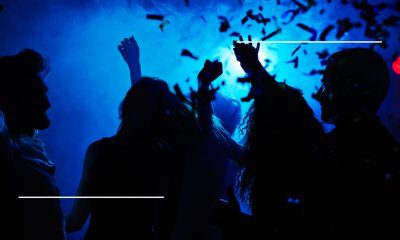
 Arts & Entertainment4 days ago
Arts & Entertainment4 days agoA Night of legacy, love, and liberation: Inside the 2025 April Fool’s Ball
-
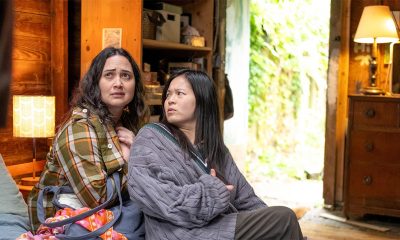
 Movies3 days ago
Movies3 days agoHeartfelt ‘Wedding Banquet’ remake a romcom worth seeing
-
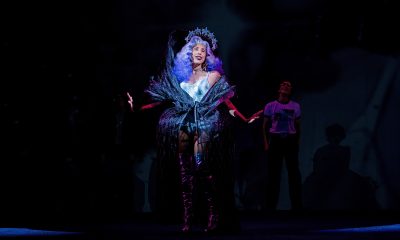
 Arts & Entertainment4 days ago
Arts & Entertainment4 days agoSouth Coast Repertory Theatre hosting world premiere production
-

 California5 days ago
California5 days agoSouth Park provides green space to a predominantly Latino community
-

 Brazil3 days ago
Brazil3 days agoUS lists transgender Brazilian congresswoman’s gender as ‘male’ on visa
-

 opinions2 days ago
opinions2 days agoOver 36,000 Angelenos unite for ‘Fighting the Oligarchy’ rally
-
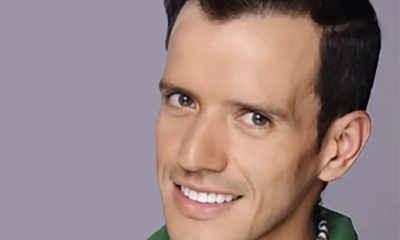
 Congress2 days ago
Congress2 days agoEXCLUSIVE: Garcia demands answers on deportation of gay Venezuelan asylum seeker
-
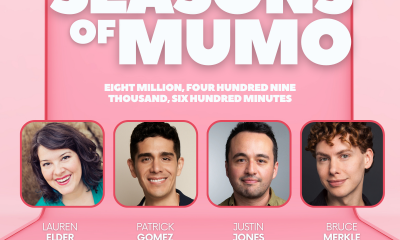
 Theater2 days ago
Theater2 days ago‘The Broadway Cage Match’ ready to rumble at WeHo’s Musical Mondays
-
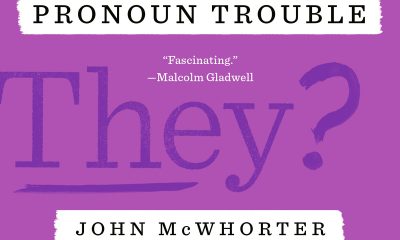
 Books23 hours ago
Books23 hours ago‘Pronoun Trouble’ reminds us that punctuation matters
